The Hisense U6NQ is a really interesting model from the Chinese manufacturer. It is the first MiniLED from the 2024 series and the only one with a refresh rate of 60 Hz. Starting with the picture quality, the MiniLED backlight combined with the VA matrix does its job – the contrast is good, and watching movies in the evening is a pleasure. Stable HDR performance, support for Dolby Vision and HDR10+, and solid colours make the TV handle most everyday tasks well. The Vidaa system works efficiently – it is fast and intuitive, without annoying stutters. A few popular apps, such as Spotify and Tidal, are missing, but most users will find what they need here, including the ability to record programs to a flash drive or external hard drive. And what about motion smoothness? It's quite decent. The option to choose between 4K at 60 Hz and Full HD at 120 Hz is a nice addition, especially if we play on consoles that often do not offer perfect 4K at 120 frames. Features such as VRR and ALLM further enhance the comfort of occasional gaming. However, it is not without its drawbacks. There are visible smearing issues in dynamic scenes, and the lack of any function to reduce this effect does not help. In terms of picture quality, this TV heavily prioritizes brightness, which sometimes leads to situations where black takes on a slight bluish hue in difficult conditions. In short: the Hisense U6NQ is a good choice for those looking for a TV that offers good picture quality and a comfortable operating system. It is not a device without compromises, but in its price range, it performs really well.
- Matching (Score)
- Our verdict
- TV appearance
- Where to buy
- Contrast and black detail
- HDR effect quality
- Factory color reproduction
- Color reproduction after calibration
- Smoothness of tonal transitions
- Image scaling and smoothness of tonal transitions
- Blur and motion smoothness
- Console compatibility and gaming features
- Input lag
- Compatibility with PC
- Viewing angles
- Daytime performance
- Panel details
- TV features
- Apps
- Playing files from USB
- Sound
Hisense U6NQ vs TCL P7K / P79K
Direct comparison
Check the best price offer:
Hisense U6NQP7K / P79K

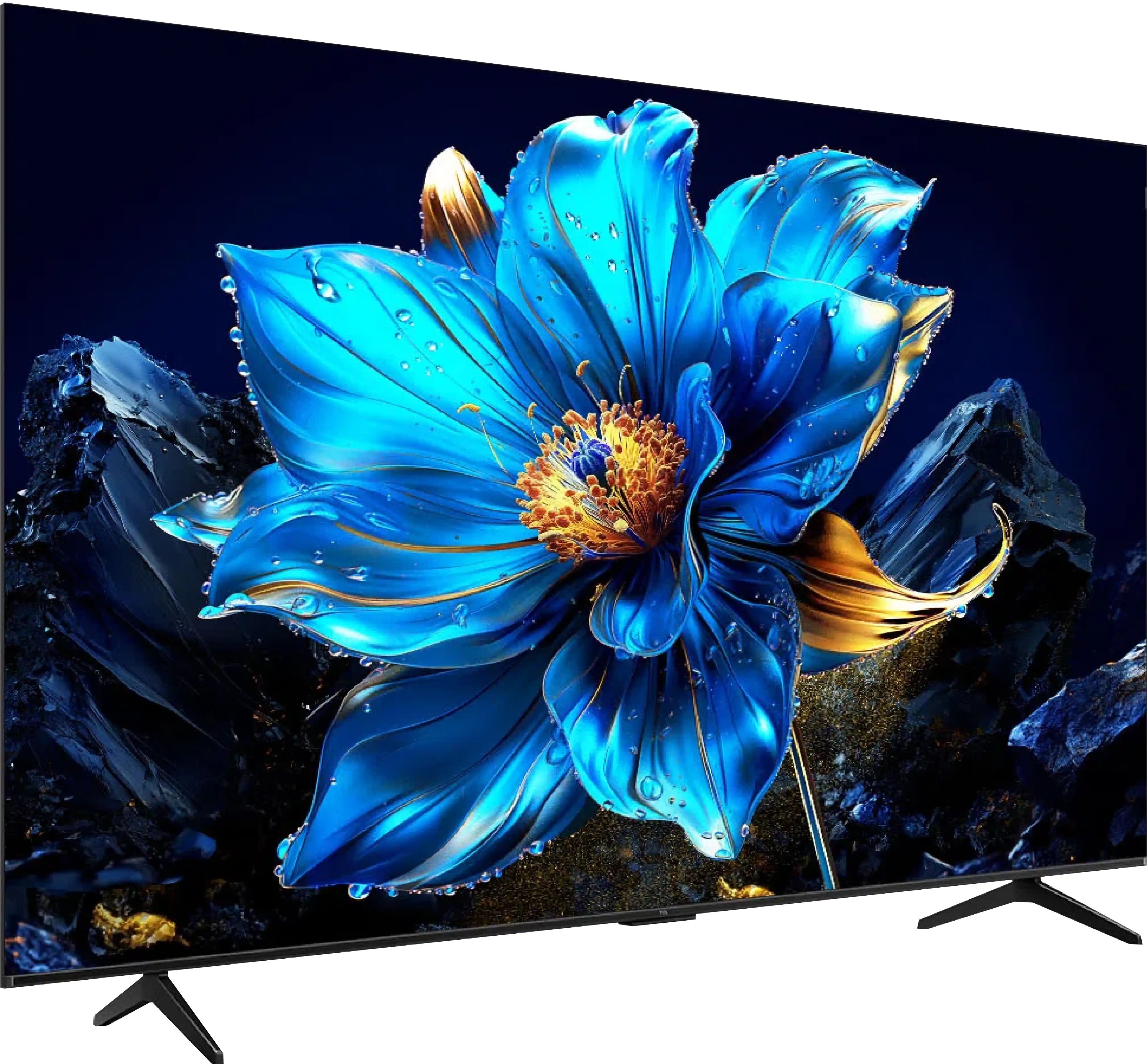
Panel type: LCD VA
Resolution: 3840x2160
System: VIDAA
Model year: 2024
Complete the survey to find out the result

Panel type: LCD VA
Resolution: 3840x2160
System: Android TV
Model year: 2025
Complete the survey to find out the result

Overall rating
6.5
5.8
Movies and series in UHD quality
6.7
5.1
Classic TV, YouTube
6.5
5.5
Sports broadcasts (TV and apps)
5.0
5.3
Gaming on console
7.1
7.1
TV as a computer monitor
6.0
2.0
Watching in bright light
6.1
4.6
Utility functions
8.9
7.0
Apps
7.7
9.6
Sound quality
6.3
6.2
Complete the survey to find out what fits your preferences
Advantages
Good contrast and black in its price class
Support for multiple HDR formats - Dolby Vision, HDR 10+
Correct color reproduction out of the box
Flexible refresh rate - 4K@60Hz or FullHD@120Hz
Decent for occasional gaming - low input lag, ALLM, VRR
Recording to USB from built-in tuners
Great black and high contrast
Support for 120 Hz in games (at lower resolutions)
Very low responsiveness (input lag), great for dynamic gameplay
Modern features for gamers, such as VRR and ALLM
Efficient Google TV system with a huge app database
Very well-functioning Google Assistant in Polish
Easy screen mirroring from your phone (support for AirPlay)
Attractive price
Disadvantages
Missing several applications in the VIDAA system - Spotify or Tidal
Issues with motion blur
Dimmer algorithms work average
Low brightness, resulting in a weak HDR effect and the image being barely visible in sunlight
The picture loses quality and colors when viewed at an angle
Not suitable as a computer monitor due to very poor letter readability
Strong dithering effect (highly digital image)
Our verdict
The time has come to gather all observations. The TCL P7K / P79K is a television that cleverly juggles compromises, offering significantly more than we could expect in its price range. Its undeniable advantage is the VA panel, guaranteeing deep blacks and high contrast, and a surprisingly rich package for gamers (with VRR and 120 Hz support at lower resolutions) makes it a phenomenal choice for console owners. The whole package is tied together by the functional Google TV system. Of course, low peak brightness means that HDR content lacks spectacular highlights, and the TV's performance in sunlit rooms is limited. And while at its relatively low price, the P7K / P79K is quite a decent option, its biggest competitor turns out to be… its more refined sibling, the P8K. Often FOR a small extra charge, we get a device a class higher – with a native 4K 144 Hz panel, significantly better audio system, and generally higher build quality, which is reflected in its much higher rating on our portal. Therefore, the final verdict must be as follows: if your budget is absolutely non-negotiable, the P7K / P79K will be a good and cost-effective choice. However, if you can afford to add a small amount, the P8K model will offer significantly more and will ultimately be a more satisfying investment.
TV appearance





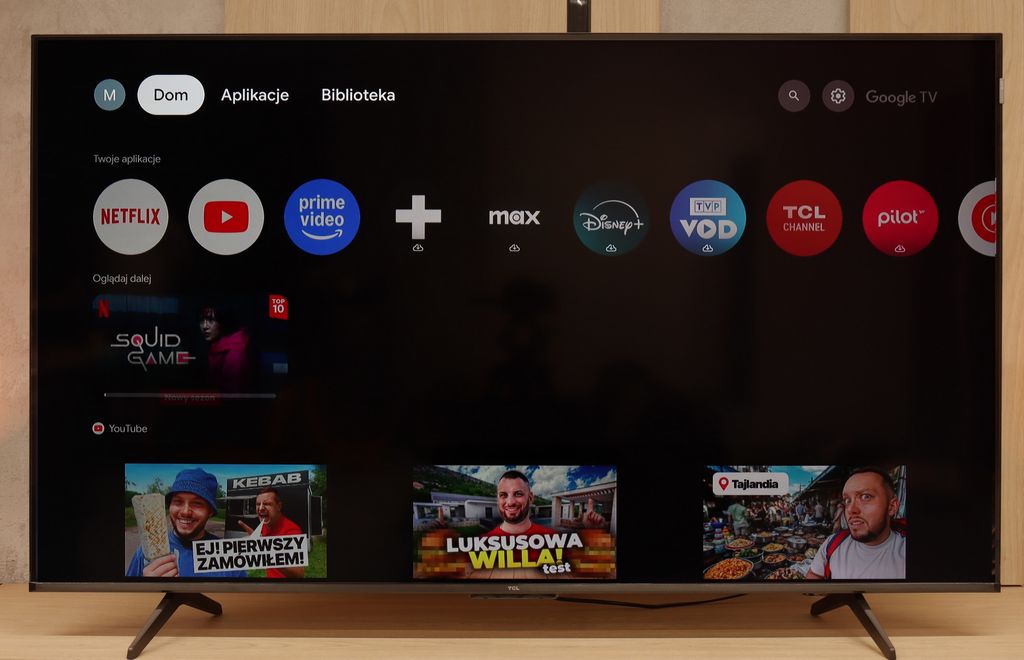
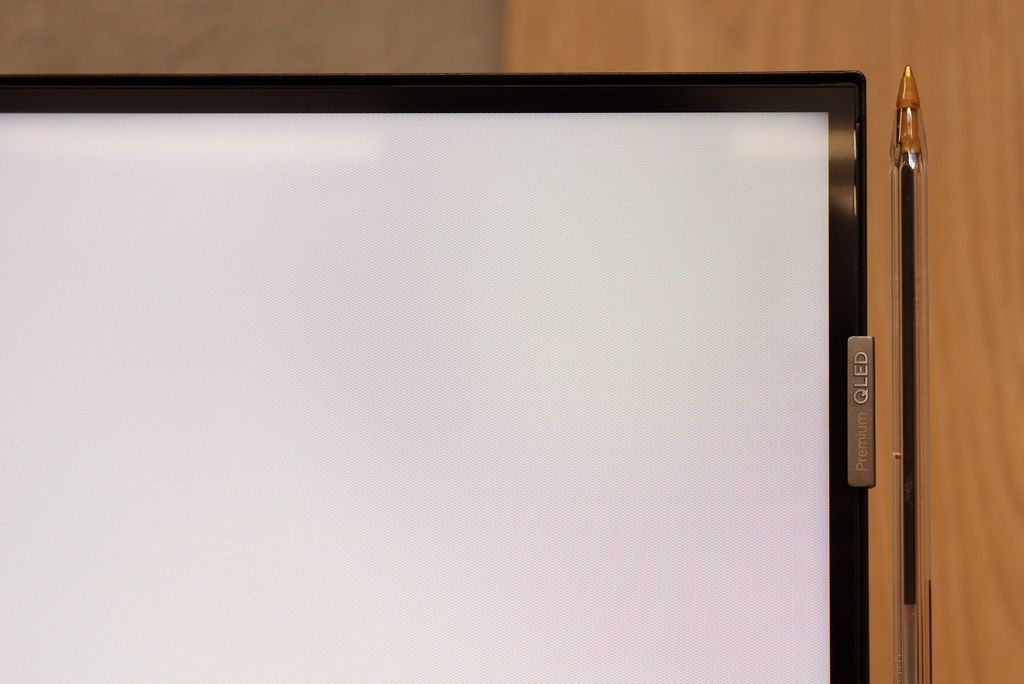
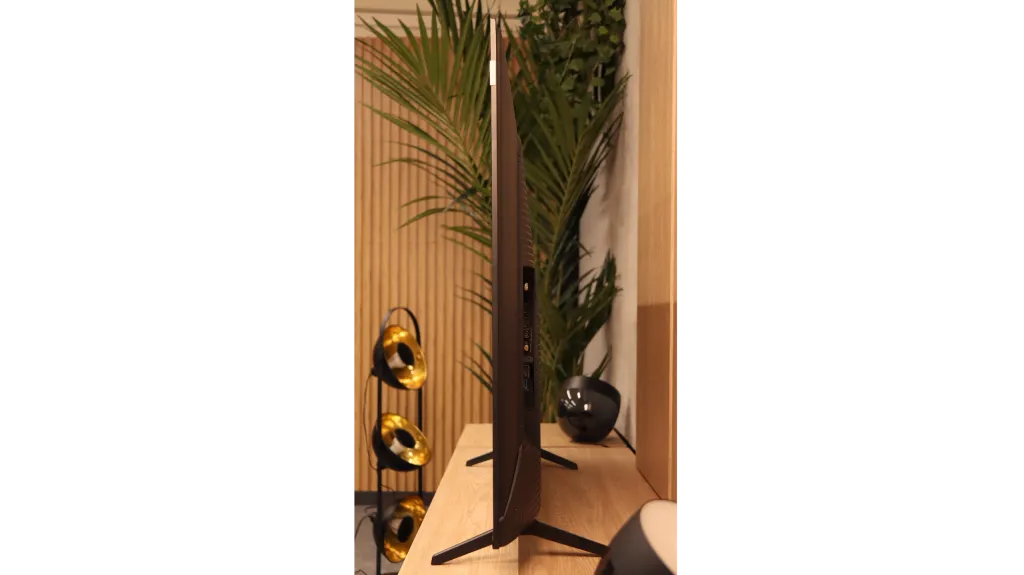
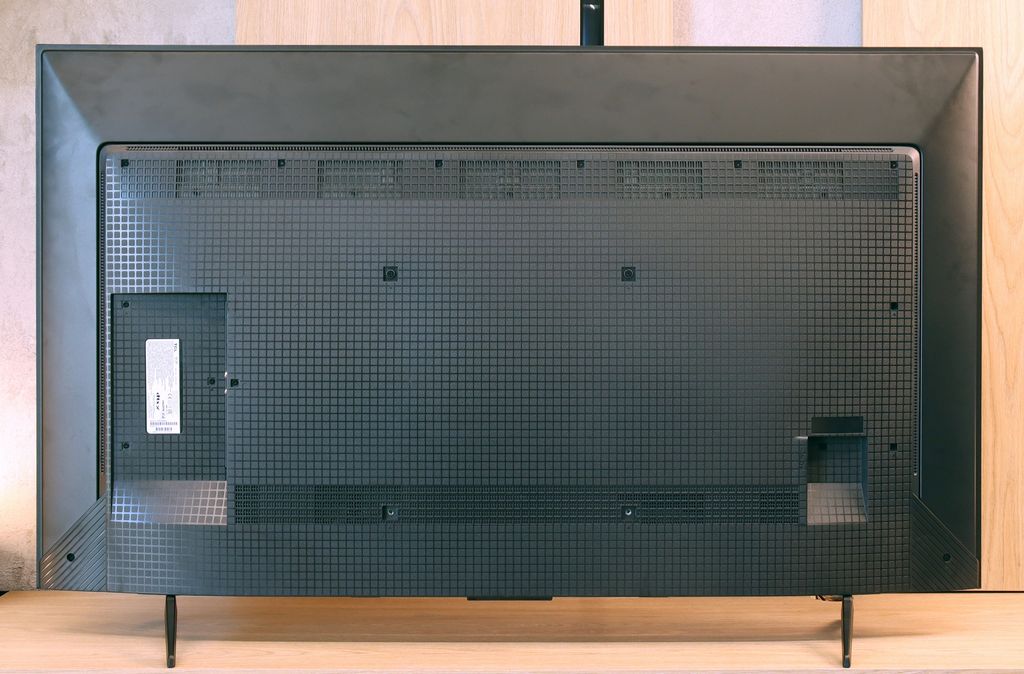
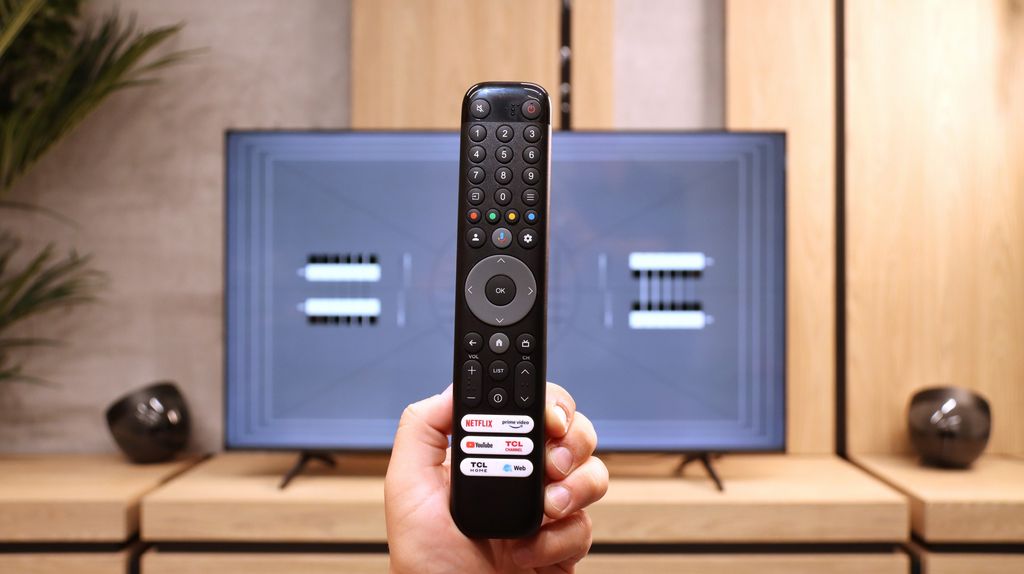
Contrast and black detail
7/10
5.2/10
Local dimming function: Yes, number of zones: 160 (20 x 8)
Local dimming function: No
Contrast:

Result
61,250:1

Result
13,650:1

Result
14,700:1

Result
11,150:1

Result
5,800:1

Result
4,000:1

Result
6,500:1

Result
2,700:1

Result
2,800:1

Result
3,800:1
Halo effect and black detail visibility:

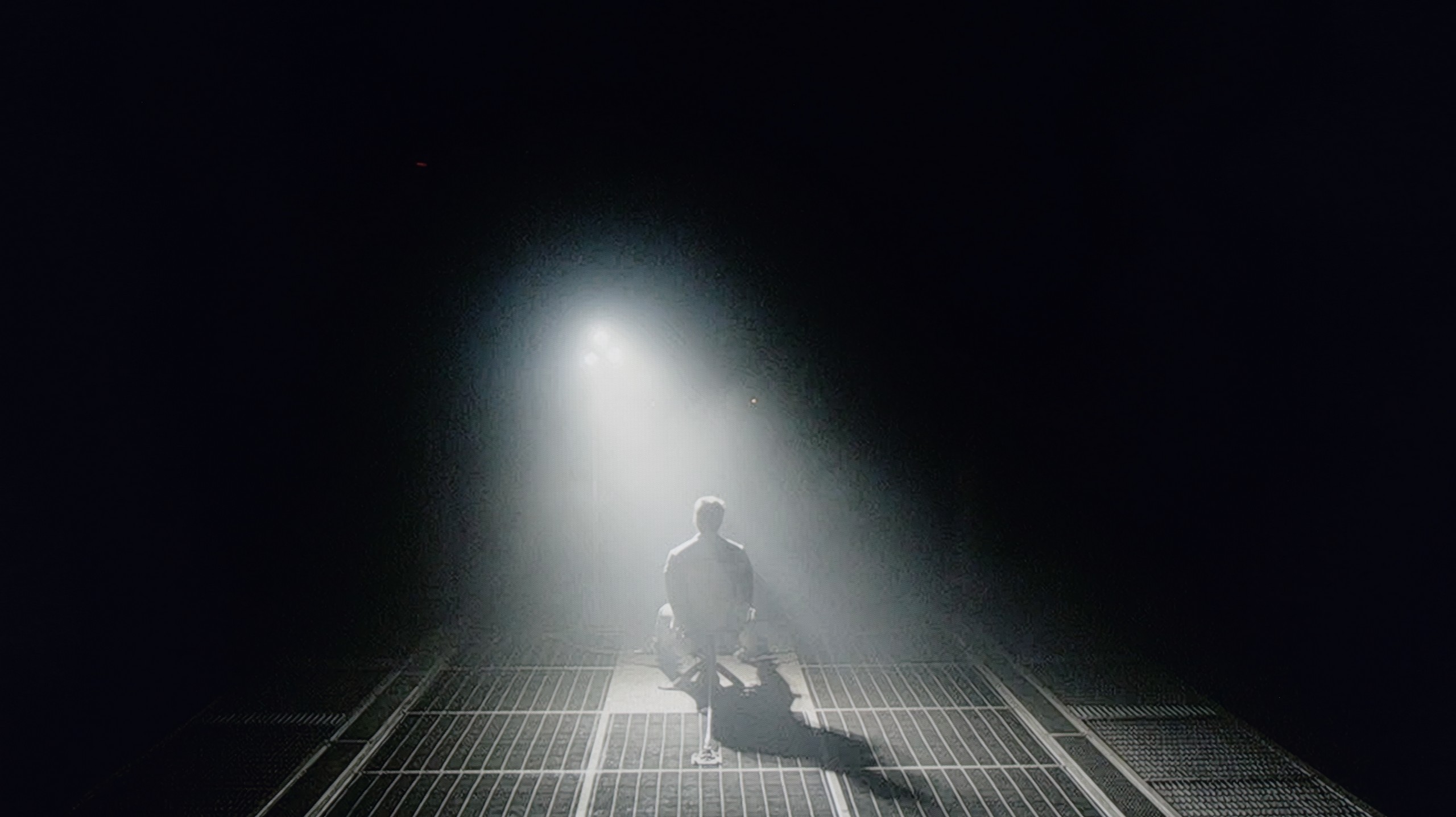
The tested 55-inch model has a VA panel, providing deeper blacks compared to IPS/ADS panels. This technology alone ensures that contrast reaches quite a decent level. It is also worth noting that the Hisense U6NQ, as a MiniLED technology television in this version, has 160 local dimming zones, which significantly improves image quality in many scenes. During tests, for example in the movie Oblivion, the television demonstrated good separation of the hologram lights, while the contrast remained satisfactory. Unfortunately, in more demanding materials, such as the Pioneer Kuro test pattern, a noticeable drop in quality was observed. In such scenes, the dimming zones did not work correctly, leading to a significant reduction in contrast. Similar issues occurred in scenes from the movie Sicario 2, where the blooming effect was clearly visible, indicating the television's difficulties with precise management of the backlight zones. Despite these shortcomings, the overall level of contrast in the U6NQ can be considered solid, especially in this price category. The television performs well in most standard scenes, and its capabilities in displaying blacks are better than those of models with other types of panels.
In the discussion about image quality, the conversation almost always starts with the issue of black depth and contrast, which are parameters defining the plasticity and realism of the observed world. And here, the TCL P7k/P79k immediately lays its strongest asset on the table – a VA-type panel. It is its construction that makes the native relationship between the brightest and darkest parts of the image more than satisfactory, especially in the context of the price segment that this model represents. In the majority of scenes, the achieved black has a noble depth, which allows for building an engaging viewer experience. To illustrate the scale, it is worth mentioning that competitive constructions based on IPS panels often offer results that are even four or sometimes five times lower, which constitutes a chasm in direct comparison. Of course, entering the territory of models oriented towards affordability, we must be aware of certain compromises. In the discussed television, we will not find an advanced local dimming system that could further enhance the impression of contrast. However, the absence of this feature is fully understandable and constitutes a logical consequence of positioning the product in the market – this technology in TCL's portfolio for 2025 has been reserved for higher-positioned, more prestigious series marked with the letter "C".
HDR effect quality
5.6/10
4.3/10
Luminance measurements in HDR:

Result
443 nit

Result
426 nit

Result
505 nit

Result
442 nit

Result
448 nit

Result
206 nit

Result
247 nit

Result
297 nit

Result
237 nit

Result
281 nit
Scene from the movie “Pan” (about 2800 nits)


Scene from the movie “Billy Lynn” (about 1100 nits)


Static HDR10


Dynamic: Dolby Vision
Dynamic: Dolby Vision


HDR luminance chart:
TCL P7K / P79K
HDR luminance
Hisense U6NQ
HDR luminance
Hisense U6NQ offers a stable HDR effect, which is rare in TVs with local dimming. On most streaming platforms, in movies and series recorded in 4K, the TV presents consistent performance – in every tested scene, regardless of difficulty level, brightness is around 450 nits. This is a pleasant surprise, as many models in this class show significant differences – some scenes are well-lit, while others are heavily dimmed by dimming algorithms. However, Hisense U6NQ prioritizes maintaining higher brightness, which comes at the expense of black levels, as mentioned in the paragraph about contrast testing.
The HDR effect on the U6NQ is satisfying, offering a noticeable "hit" of light in bright moments, although it is worth remembering the previously mentioned blooming, which can be visible in more challenging scenes. In terms of colours, the TV also performs decently – the coverage of the DCI-P3 palette is 89%, and BT.2020 is 71%. Although these are not results that would impress more demanding users, for beginners in the world of high-quality content, the U6NQ serves as a solid choice. Thus, it presents an interesting option as an "entry-level" TV for home cinema.
When evaluating the HDR effect, we must make it clear and without marketing embellishment: the P7K/P79K is not and was never meant to be a master in this field. The maximum peak brightness that this panel can generate is only around 300 nits. This is a borderline value, a sort of thin red line between what can be considered a barely satisfactory HDR signal and what is really not much different from standard dynamic range (SDR), unfortunately leaning towards the latter. Synthetic tests found brutal confirmation in reality – our measurements taken during movie screenings showed that luminance in key bright parts of the content rarely exceeded the threshold of 200-250 nits. Therefore, this is not a television that would allow content produced in a wide tonal range to truly shine, and we must openly acknowledge that.
Unfortunately, the issue of color reproduction is presented equally restrained. Although the manufacturer positions this model in the "QLED" family, thanks to the use of a PFS LED filter, the results do not match the heightened expectations. The coverage of the wide DCI-P3 color gamut is only 86%. Compared to the market, this is at best an average result, as most devices that employ additional layers to expand the color spectrum easily achieve values at a minimum level of 90-92%.
Factory color reproduction
8/10
5.9/10


Factory Mode
After calibration
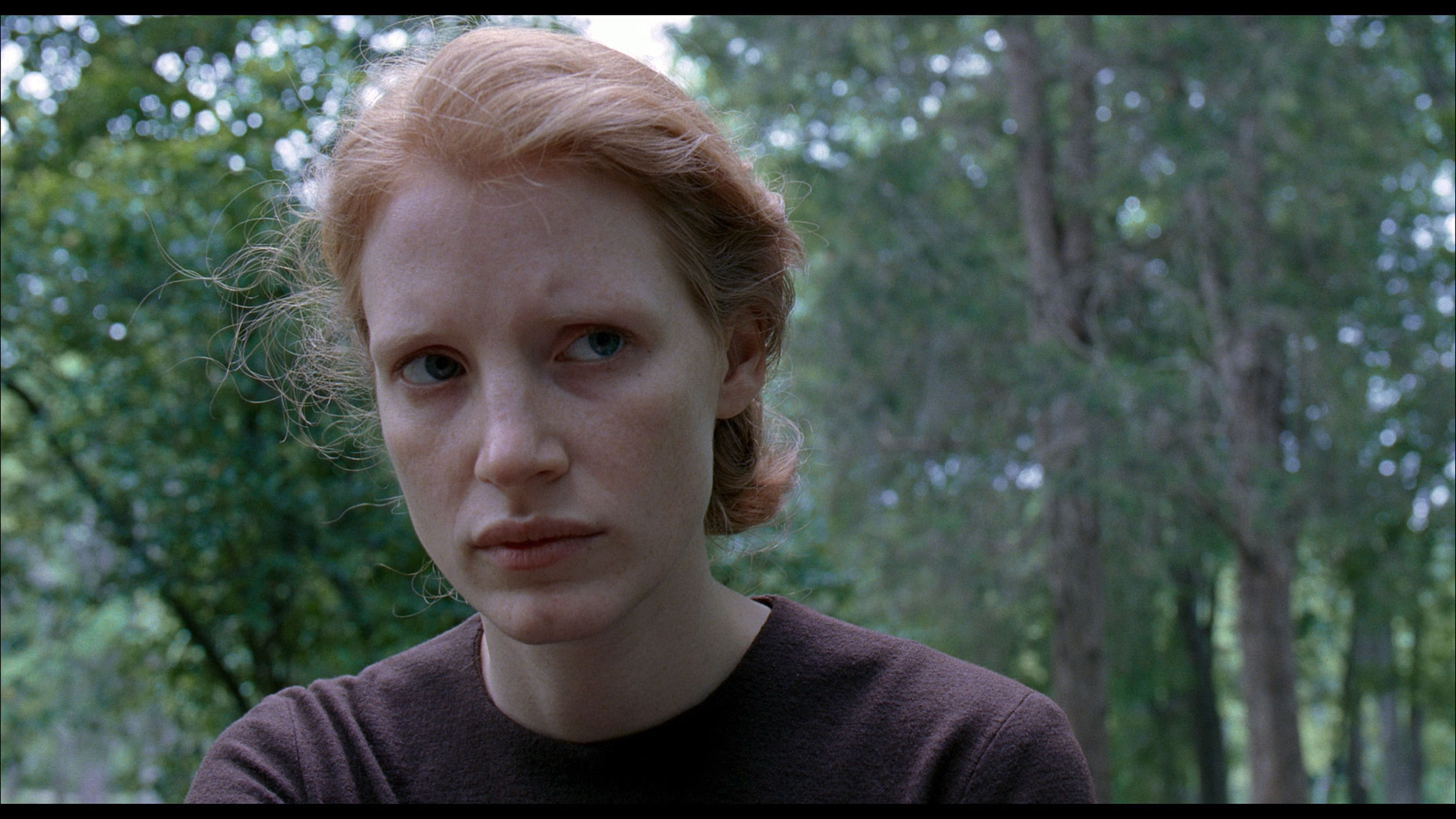
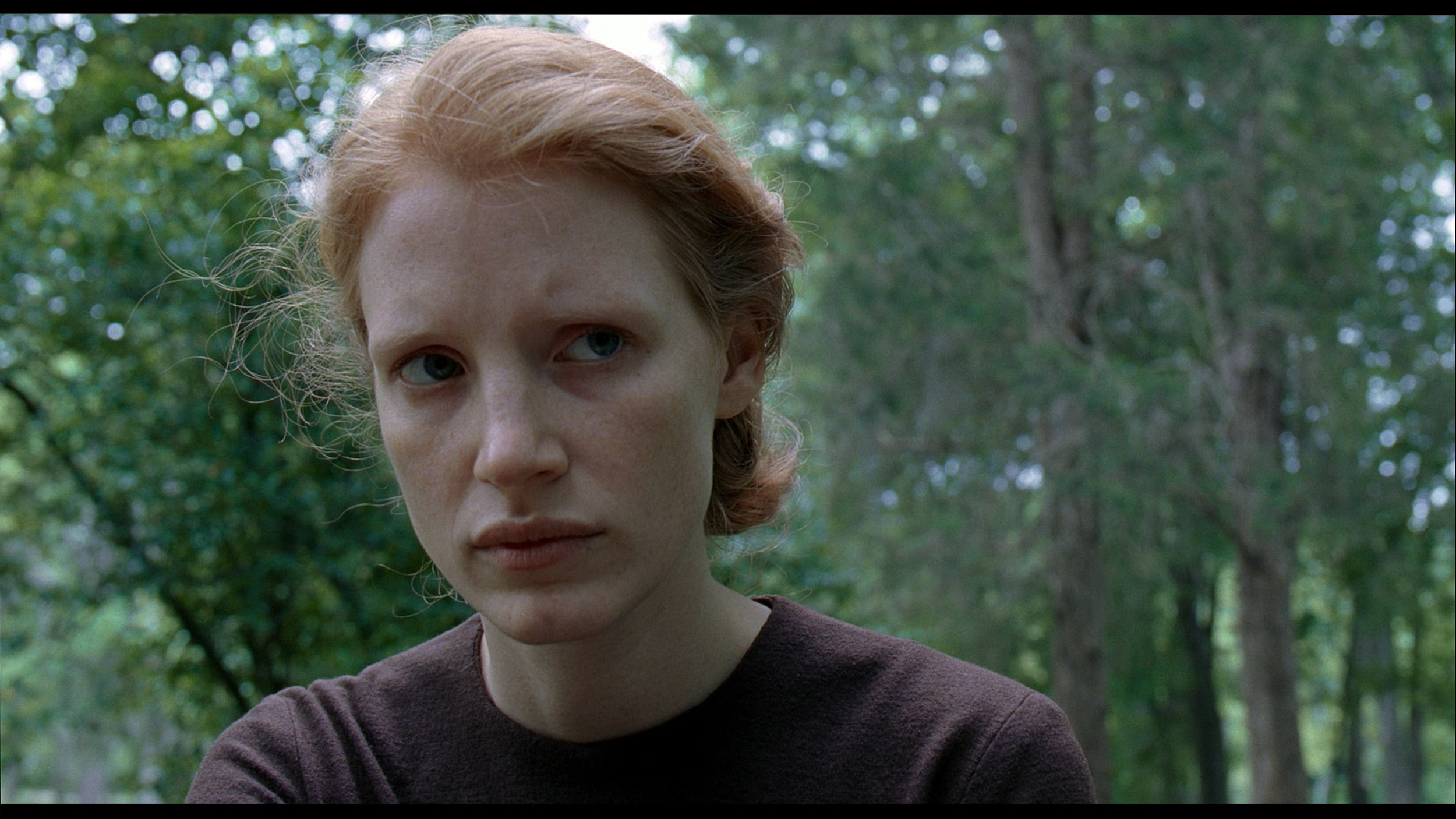
Factory Mode
After calibration
The Hisense U6NQ in Filmmaker mode offers truly decent colour reproduction, although it is worth noting that differences between individual units can be noticeable. The model we tested surprised us positively, especially with HD content in SDR quality. The white balance was correct, and errors around 3–4 ΔE should be acceptable for the average viewer. The TV performed slightly worse in colour reproduction with 4K HDR materials. The dominance of blue hues led to unnatural cool tones on the Colour Checker chart, giving the picture a "store-bought" character. Combined with issues in brightness characteristics – gamma and EOTF curve caused some parts of the image to be too dark – the Filmmaker mode loses some of its credibility in this case. Although the factory settings of the tested unit deserve praise, especially in SDR, there were still minor shortcomings that would require adjustment to fully leverage the capabilities of the TV.
Every reliable image quality assessment must begin by selecting the most optimal factory mode. In the case of the tested model P7K/P79K, the choice was confidently made for the "Film" mode. It is this mode that presents an image closest to the creators' intentions, avoiding both the exaggerated brightness of dynamic mode and the excessive dimming known from eco settings. And it must be admitted that, for a device in this price range, the factory calibration is surprisingly decent, although it is not free from a few stumbles. The most noticeable flaw turned out to be an imperfectly adjusted white balance. A slight dominance of the blue component gives the image a subtly cool, chilly character, thus deviating from the exemplary neutrality that the director wanted to show us. The television performs much better in reproducing the grayscale in a standard dynamic range – the gamma curve is executed almost perfectly. A minor reservation can only be made for the darkest parts of the image, where a slight deviation from the norm causes a loss of some detail in the shadows. The most serious challenge for TCL's software, however, was the interpretation of the HDR signal, which is illustrated by the EOTF curve. The television follows its own, rather free path here – the darkest details are disproportionately brightened, followed by a noticeable slowdown in brightness increase for midtones. Fortunately, most of these imperfections are software-related issues that can be eliminated. With this thought in mind, we proceeded to the professional calibration process.
Color reproduction after calibration
8.3/10
7/10




Although the factory settings of the Filmmaker mode on the Hisense U6NQ were quite good, we decided to carry out calibration to fully assess the capabilities of this model. Only after such an adjustment can you see how the TV performs in ideal conditions. In the case of SDR content, which was already at a high level, we managed to further improve the white balance. However, the biggest change came from the brightness characteristic correction - gamma was optimized and no longer causes excessive dimming of the image, which improves its naturalness.
For 4K HDR content, calibration also yielded positive results. We eliminated the problem of blue dominance, which translated into a more balanced and natural image. However, managing brightness in HDR materials remains a more complicated issue. The EOTF curve, although it had problems with dimming the image in the range of 10-30% brightness under laboratory conditions, reveals other shortcomings in real scenes. The TV tends to excessively brighten the smallest elements on the screen. As a result, this leads to noticeable halo effects around bright objects. This phenomenon, which we mentioned earlier in the context of contrast and HDR, stems from the technological limitations of the model and is often difficult to eliminate.
In short: although the Filmmaker mode with factory settings looked decent, calibration allowed for an even better effect - minor adjustments resulted in a more balanced image, especially in HDR content. Calibration will be a beneficial step for users seeking the highest quality image.
The calibration process turned out to be a home run, especially in the context of standard dynamic range (SDR) content. We successfully managed to eliminate the TV's tendency to emphasize cool tones, restoring the whites to their natural neutrality. Furthermore, precise adjustments allowed us to correct a slight error in the gamma curve, so the darkest areas of the image regained their proper depth, without a trace of unnatural brightening. The effects are measurable and impressive – in the ColorChecker test, the vast majority of color reproduction errors fell below the perceptual threshold, achieving a deltaE value below 2. This is a result that would not shame much more expensive constructions. Unfortunately, in the case of HDR content, we hit a wall in the form of the inherent limitations of the panel itself. And although we managed to bring the colors in line, the software's specifics mean that the TV still adapts brightness in its own way, as evidenced by the persistent, non-standard EOTF curve. In summary, calibration brings tremendous added value, but one must be aware that it cannot overcome certain physical barriers. A slight boost in black levels, resulting from the lack of local dimming, and limited peak brightness mean that HDR content will not always be able to showcase its full potential. This is simply not the main task of this display; its true strength, especially after professional tuning, lies in the viewing of SDR materials.
Smoothness of tonal transitions
7.8/10
5/10





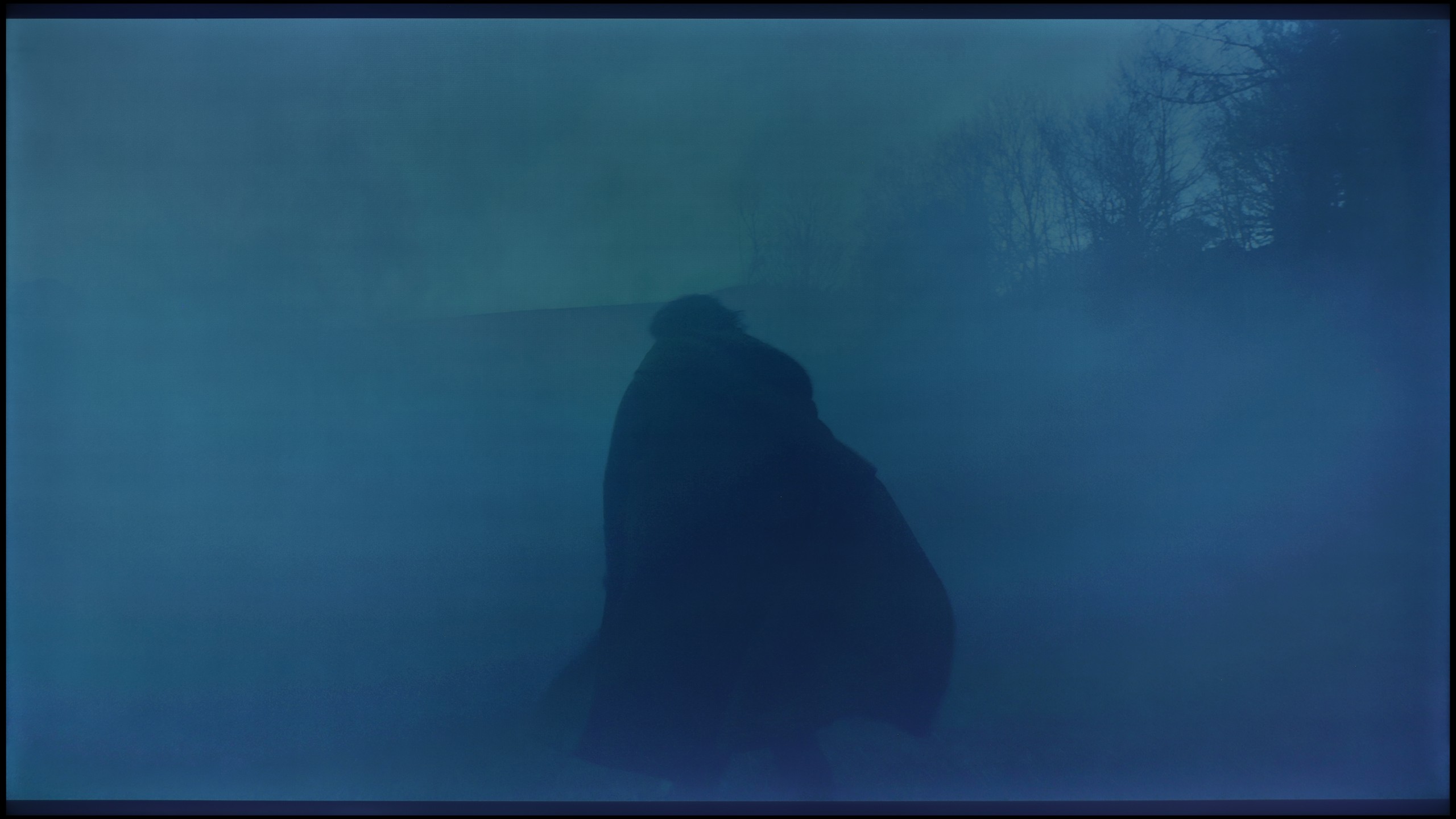






The fluidity of tonal transitions in the Hisense U6NQ is at a high level. In most scenes, there are no noticeable issues with colour blending, which provides a pleasant and cohesive visual experience. However, a more discerning eye may spot minor imperfections in specific cases, such as the scene with the blue sky in Kingsman or the final scene with the red background. These subtle shortcomings are, however, small enough not to affect the perception of the image for most users. Overall, the television performs very well in this category.
The issue of fluidity in tonal transitions, or popular grading, is another area where the P7K / P79K evokes mixed feelings and surprises with its dual nature. If we were to evaluate solely its ability to render smooth color gradients, we would undoubtedly give it a solid score of 8/10. Unfortunately, this positive image is marred by the use of very aggressive and unsightly dithering. This artifact is particularly noticeable on demanding test patterns – such as the one depicting an actor submerged in red water – where a rough, unnatural texture appears on uniform color surfaces, revealing the digital nature of the image. This is particularly disappointing as it is not a new issue. It seems to be a sort of legacy from previous generations of budget TCL models, which is a shame because it constitutes a flaw on what is essentially a quite competent image and is a mistake that could have been avoided.
Image scaling and smoothness of tonal transitions
5.6/10
7/10
Smooth transition function

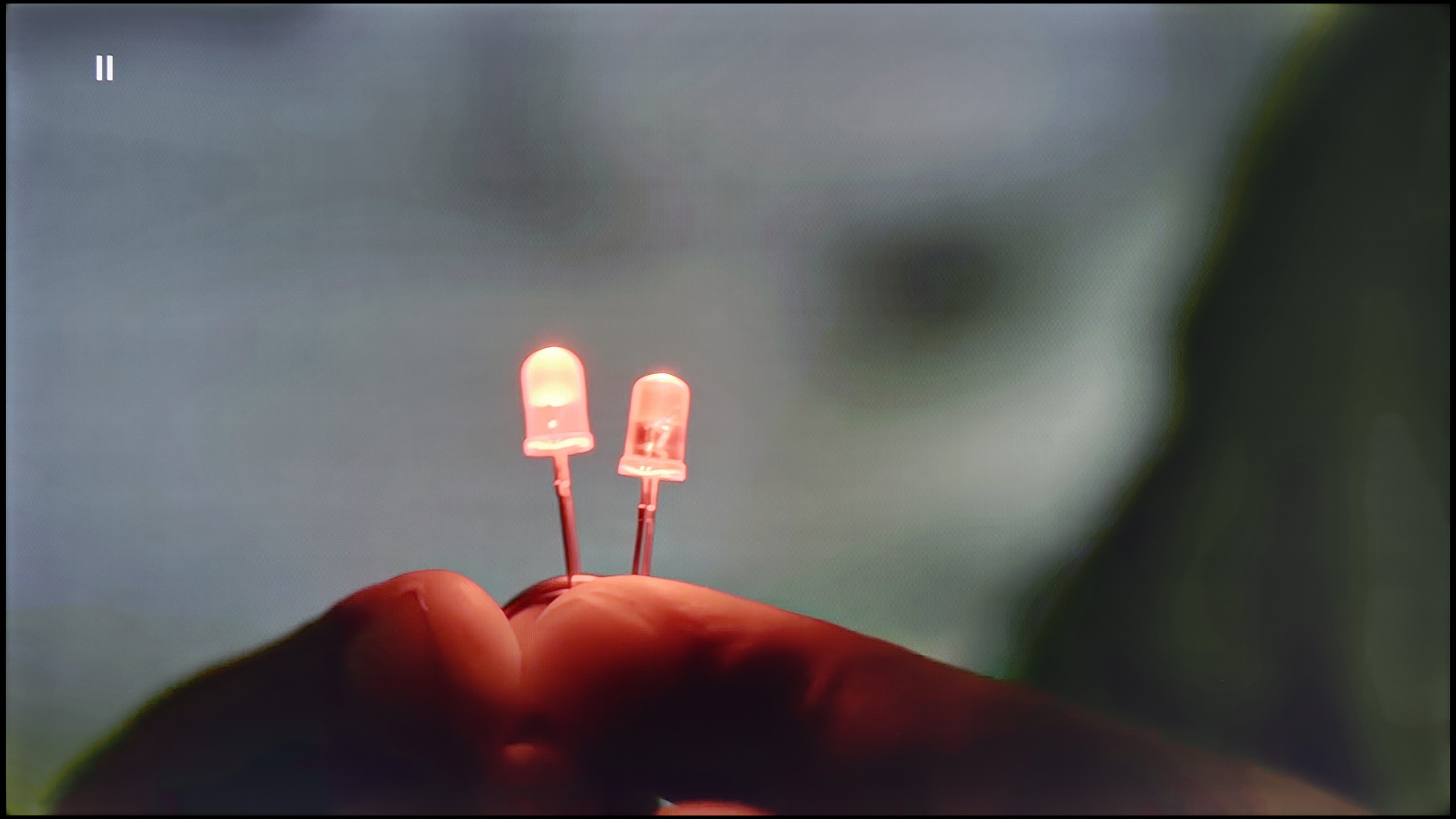
Image without overscan on the SD signal


With high-quality materials, such as 4K, tonal transitions on the U6NQ look really good – the colours blend nicely and the image is cohesive. Unfortunately, when we switch to content in a lower resolution, the television does not offer any additional features that could improve this aspect. An example is the test with the light bulb, where it is clear that the television has trouble rendering subtle tonal transitions.
On the other hand, digital processing performs quite well. The image looks plastic, pleasantly soft, and free of excessive aliasing. Moreover, thanks to the sharpness settings, it can be adjusted according to personal preferences – whether towards a softer or sharper image. Overall, although scaling lower-quality materials could be better, the television does well with image processing.
After a series of harsh evaluations, fortunately, the time comes for praise, and this is due to the TCL AiPQ image processor for its work in digital processing and content scaling. It should be noted right away that we are not talking about the level known from flagship designs; nevertheless, in the price segment represented by the P7K/P79K, the results achieved are more than solid. The feature that smooths tonal transitions performs particularly well, effectively eliminating posterization, which are the characteristic bands often visible in materials with higher compression, such as from the YouTube service. The algorithm can elegantly remove unwanted gradients, which ultimately looks really good. The television also competently handles upscaling, which is the task of raising low-resolution materials to 4K standard. The output image, although it may seem a bit too sharp out of the box, fortunately, is not a problem. The software allows for easy adjustment of this parameter using a sharpness slider, so the final appearance can be easily tailored to personal preferences.
Blur and motion smoothness
3.4/10
4.8/10

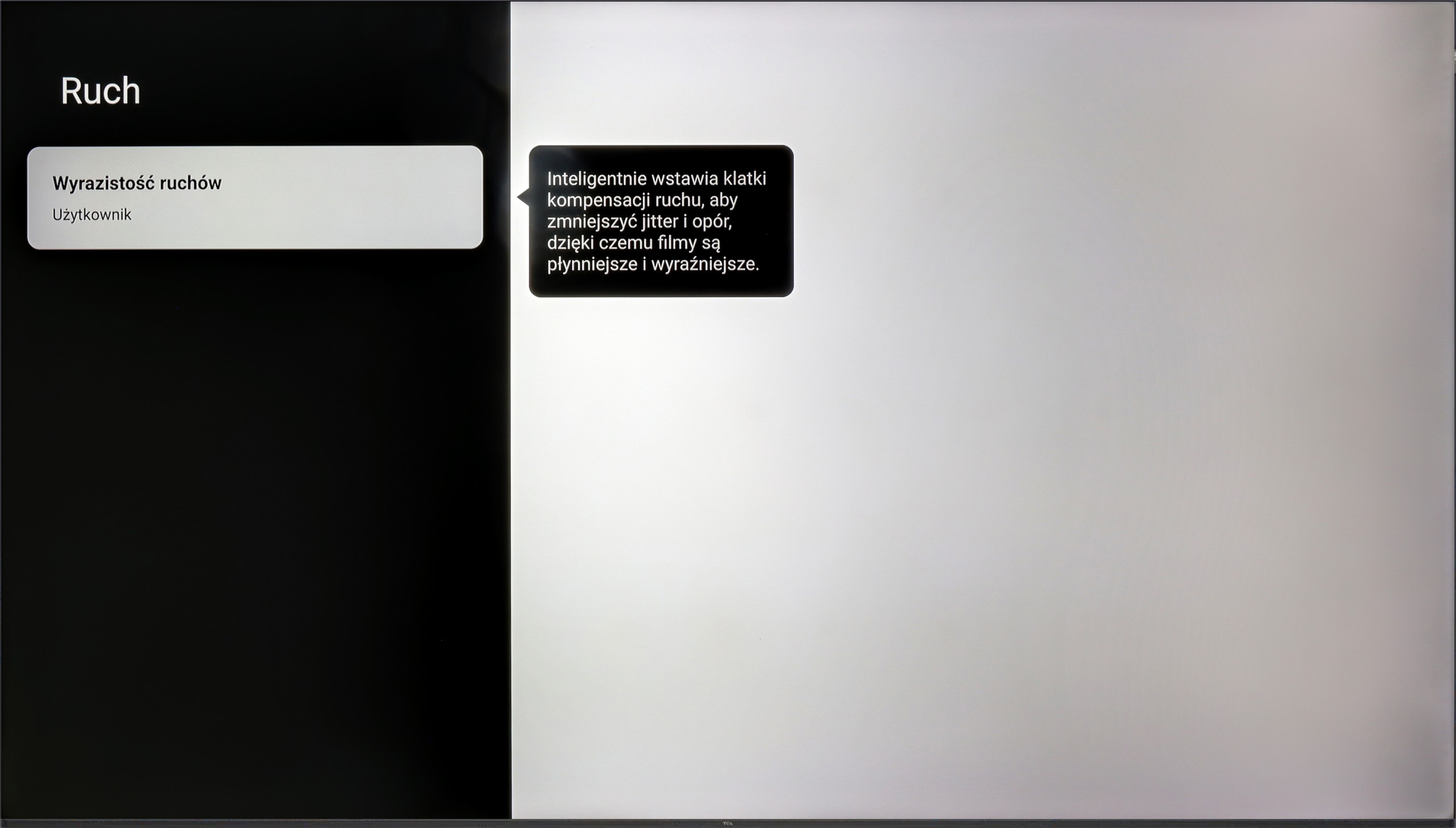
Blur (native resolution, maximum refresh rate):






The Hisense U6NQ offers a native refresh rate of 60 Hz at a 4K resolution, but the manufacturer has added a feature that allows increasing the refresh rate to 120 Hz at the cost of reducing the resolution to Full HD. This is a solution we have seen before in TVs from TCL, such as the C655 and the C655 PRO. This gives the user the option to choose – higher motion fluidity or full resolution. This is a sensible approach, especially considering that many games on new-generation consoles do not achieve full performance in 4K at 120 Hz.
As for movies, the TV is equipped with a motion smoothing feature that allows adjusting motion characteristics to personal preferences. This can create a more cinematic effect or increase fluidity in dynamic scenes. Overall, the Hisense U6NQ offers reasonable solutions for motion fluidity that should satisfy both gamers and movie lovers.
The issue of fluidity and sharpness of the image in motion is inextricably linked to the fundamental parameter of the panel, and in the case of the TCL P7K/P79K, we are dealing with a panel that has a native refresh rate of 60 Hz. This specification already defines its capabilities and makes it difficult to unequivocally recommend it to enthusiasts of dynamic sports broadcasts. During rapid camera movements, the image loses sharpness, and the panel itself also shows a slight tendency to blur, which may be noticeable to more sensitive viewers. Fortunately, not everything in this aspect has been left to chance. The manufacturer has implemented a simple motion smoothing system, which is primarily used in film materials recorded at 24 or 30 frames per second. Thanks to a dedicated slider, the user can independently decide on the final character of the motion – from a fully cinematic, slightly juddery image to achieving a very smooth, almost theatrical effect. It is a simple yet effective tool that allows users to tailor the viewing experience to their own preferences.
Console compatibility and gaming features
6.3/10
6.7/10
- ALLM
- VRR
- VRR range48 - 60Hz48 - 120Hz
- Dolby Vision Game Mode
- Correct implementation of HGIG
- 1080p@120Hz
- 1440p@120Hz
- 4K@120Hz
- Game bar

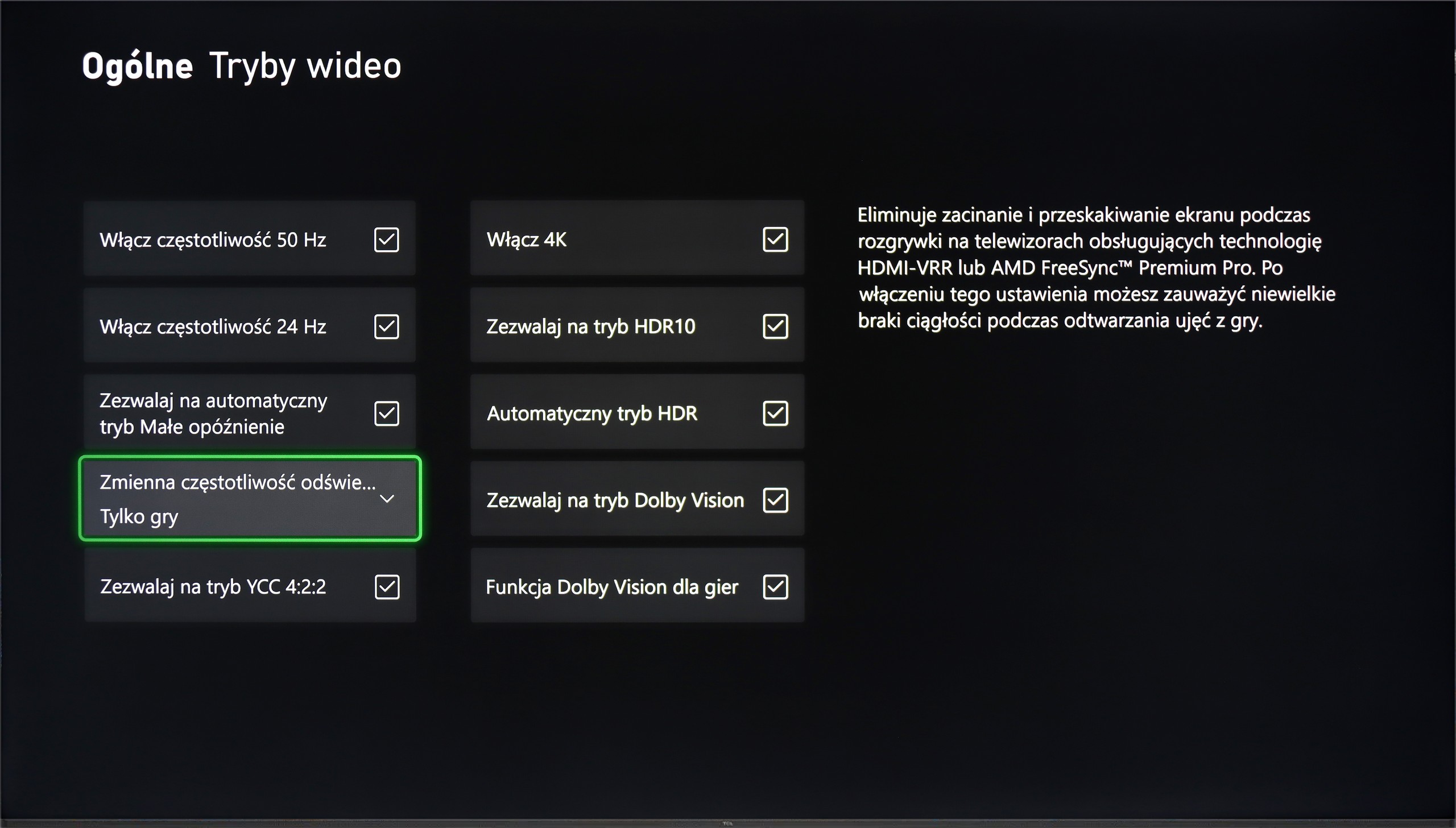

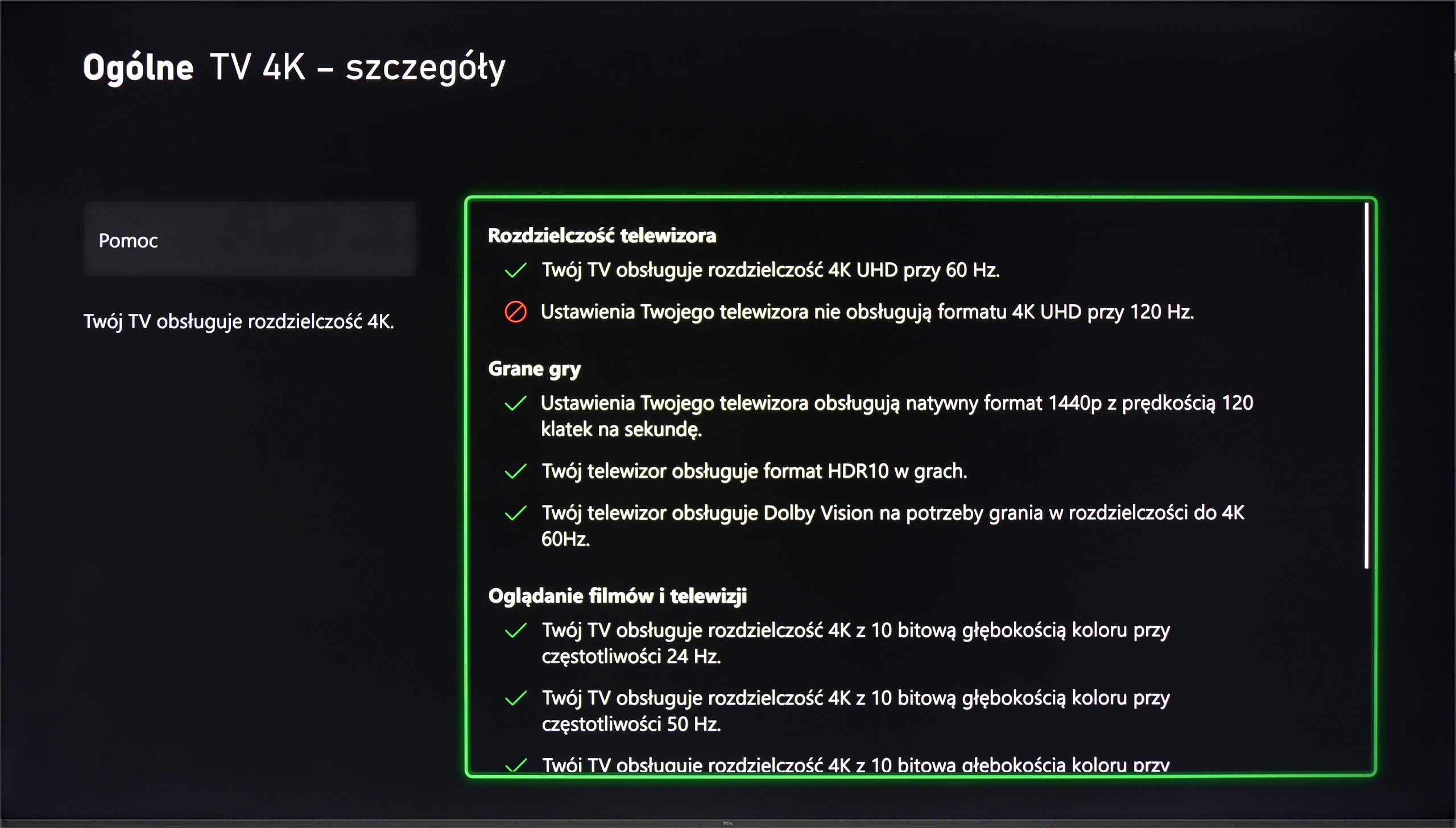

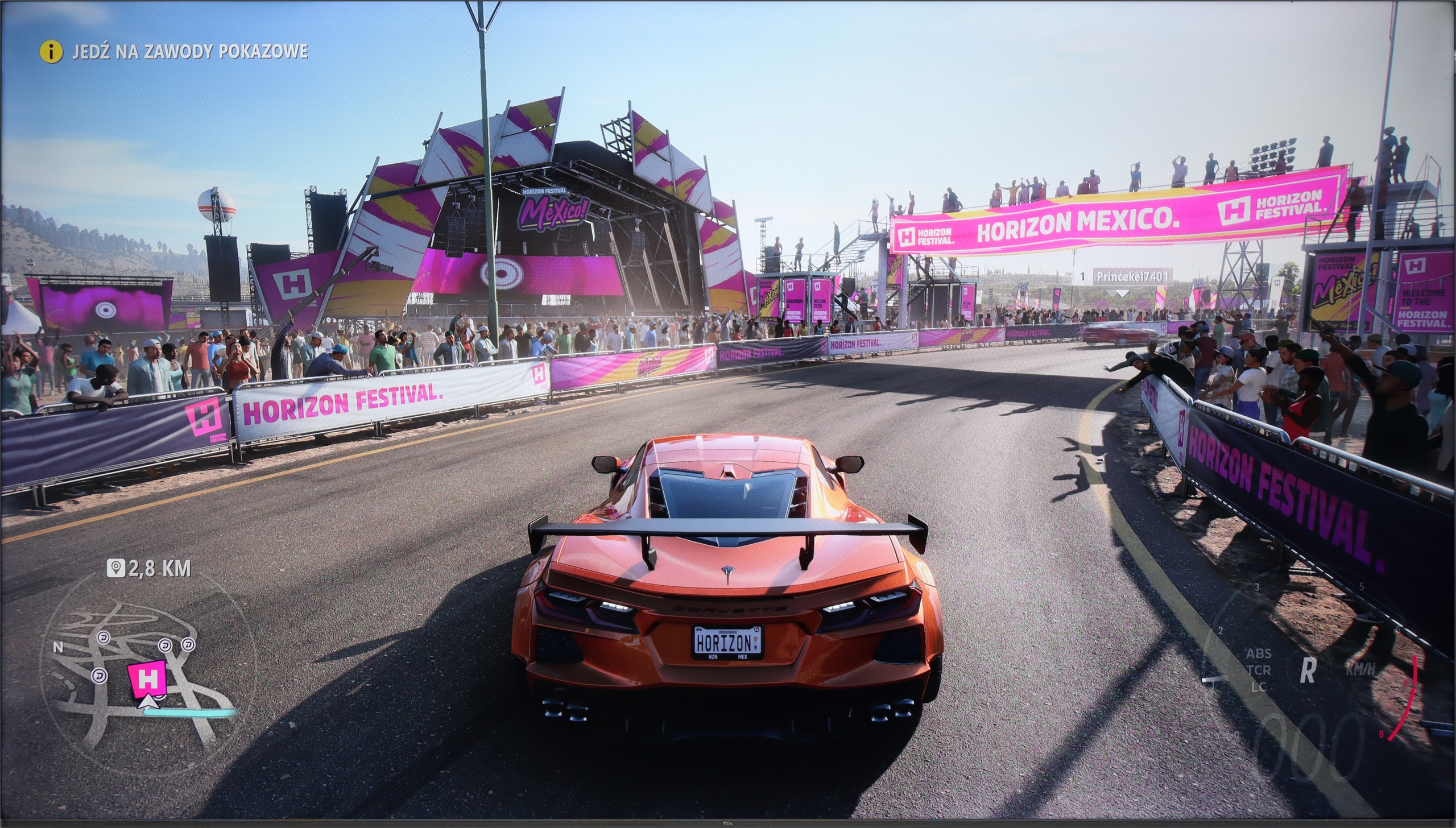

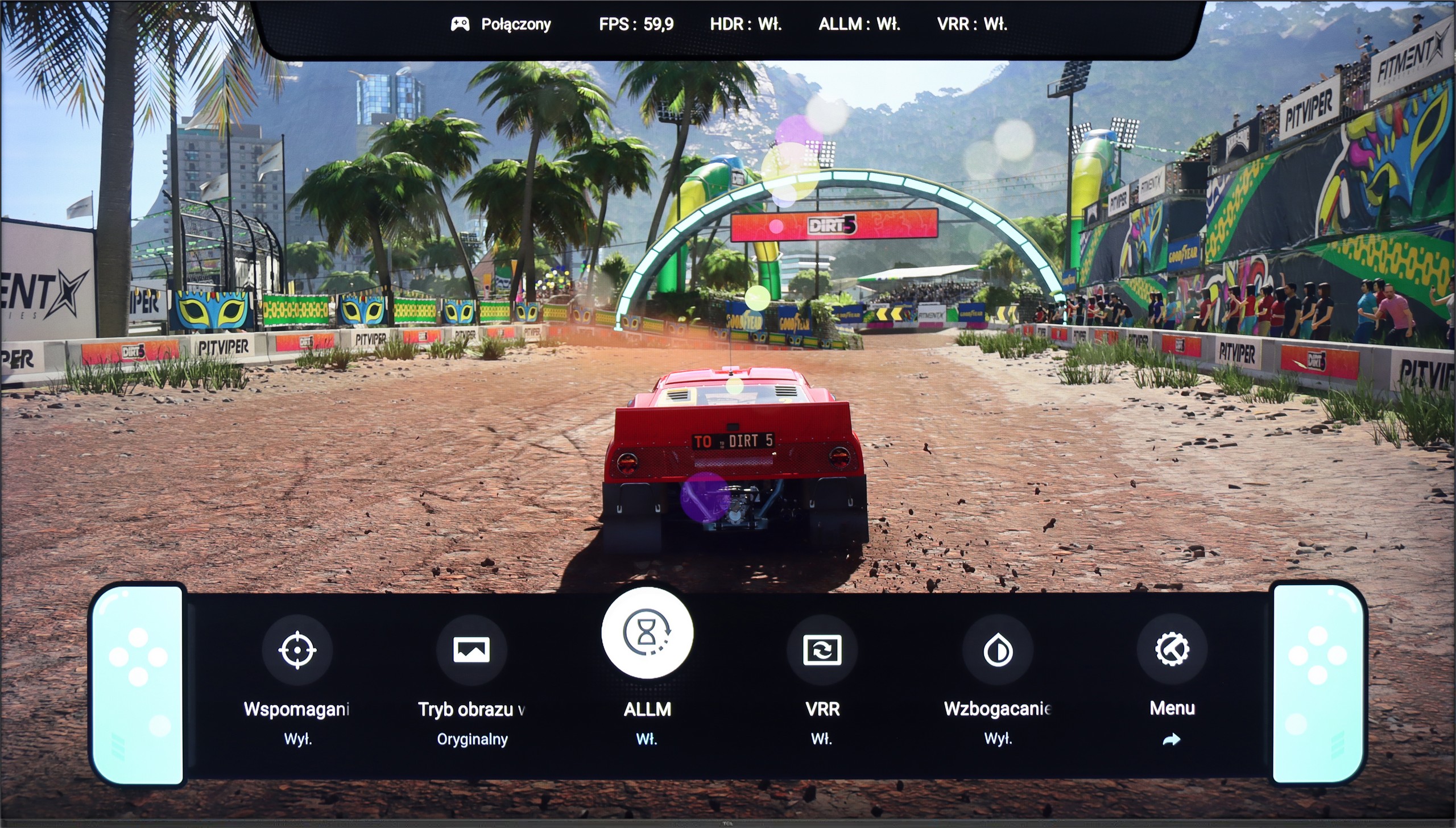
The Hisense U6NQ offers the option to choose between 4K at 60 Hz and Full HD with a refresh rate of 120 Hz. This solution may appeal to gamers who want to decide what is more important to them – higher resolution or smoothness. The television supports features such as ALLM and VRR, which help in achieving smoother gameplay. A nice addition is the GameBar – an easy-to-use panel that allows for quick changes to picture settings and checking statistics. It also includes a Dolby Vision Gaming mode, which works with low input lag, a big plus for console enthusiasts. Unfortunately, it lacks HGiG, which could further enhance HDR quality in games. Nevertheless, the Hisense U6NQ performs quite well as a gaming television, especially for those who play occasionally and do not require the highest refresh rates in 4K. It is a solid choice for less demanding users.
Although on paper the native 4K@60Hz matrix might suggest that the TCL P7K/P79K is not a TV tailored for gamers, the reality turns out to be surprisingly different. On the contrary, the manufacturer has ensured a rich package of features that make it a very friendly companion for next-generation consoles. Onboard, we find key technologies such as ALLM, which provides automatic switching to low-latency mode, and VRR, or variable refresh rate, which eliminates screen tearing. The list is completed by support for Dolby Vision Gaming and a simple yet functional Game Bar. However, the real and extremely pleasant surprise is something else. It turns out that the TV easily supports high refresh rate signals of 120 Hz, but at lower resolutions – 1080p and 1440p. This is fantastic news for console owners who know full well how rarely games run in native 4K at a full 120 frames per second. The ability to choose between higher resolution and doubled smoothness is therefore an extremely sensible compromise.
In summary, although the P7K/P79K may not be the target screen for the most avid tournament gamers, it offers a package of options for the casual or occasional console user that is hard to find among many competitors at this price point.
Input lag
9.9/10
9.9/10
SDR
HDR
Dolby Vision
The Hisense U6NQ TV offers a very low input lag of 14 ms, making it a good choice for gamers, especially those who prefer dynamic titles. It's also worth noting that the Dolby Vision mode in games works really well here. This is a pleasant surprise, as on many other televisions this HDR mode performs only averagely.
Complementing this rich package for gamers is a parameter that has a direct impact on comfort and performance in gameplay – input lag. Even in native 60 Hz mode, the television boasts an excellent result of just 15 ms. However, the real magic happens when switching to 120 Hz mode, when the lag drops nearly in half, reaching values below 10 ms. Such responsiveness means that every command from the controller is transferred to the screen in the blink of an eye, something not only professionals will appreciate, but anyone who values smooth and immediate interaction with the game.
Compatibility with PC
6/10
2/10

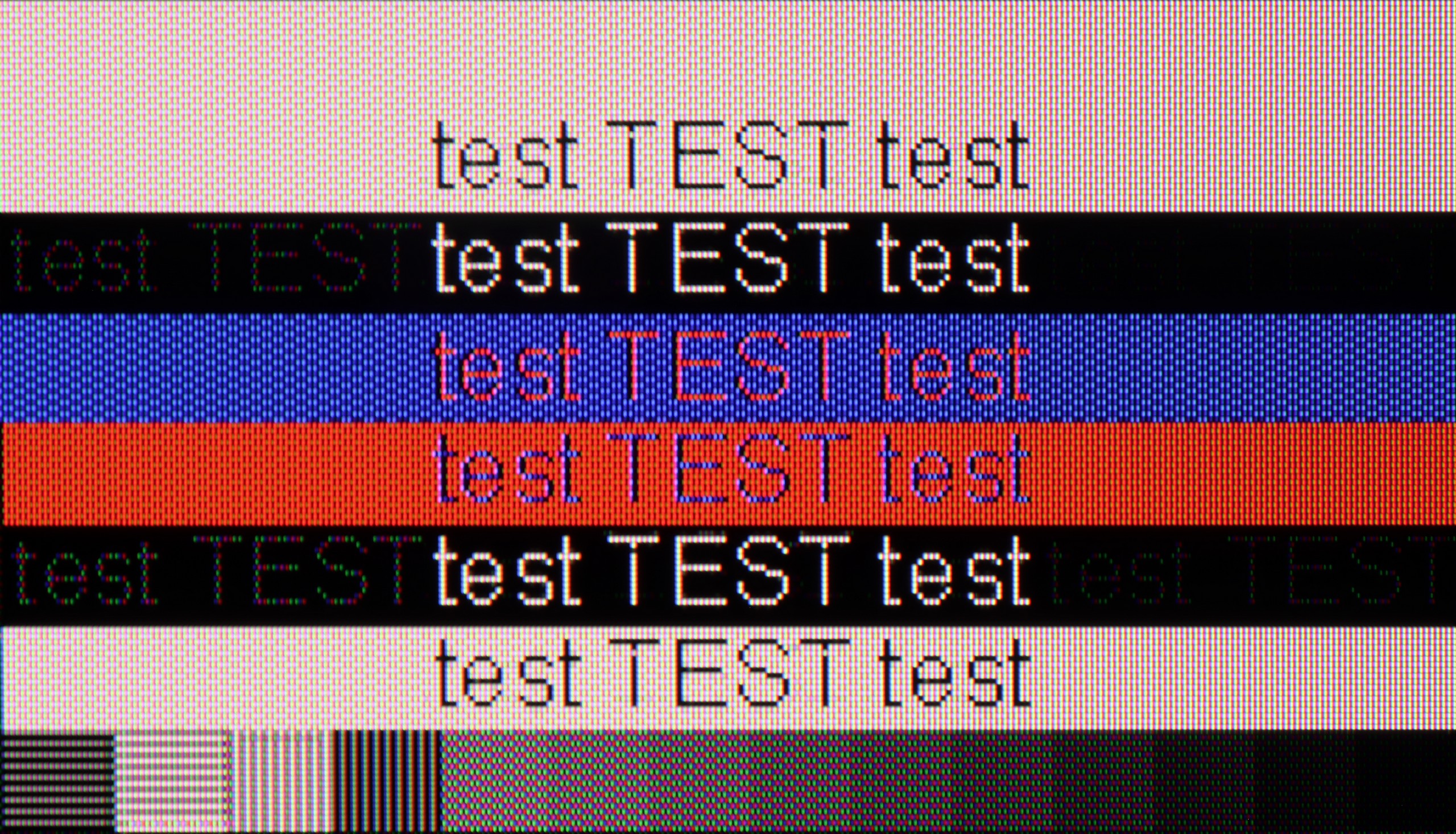
As a screen for working with a computer, the Hisense U6NQ performs quite decently. The fonts are readable enough, so it's sufficient for everyday writing or browsing the internet.
When it comes to gaming, the television supports G-Sync, but only at 4K resolution at 60 Hz. Unfortunately, if someone was counting on 120 Hz smoothness in 1080p with G-Sync enabled, they might be disappointed – the television does not offer this. It's a bit of a shame, as it could have been a good solution for gamers who prefer smoothness over resolution.
We finally come to an area that can undoubtedly be described as the biggest Achilles' heel of the TCL P7K/P79K – its cooperation with a PC. This is paradoxical because on paper, everything looks promising. The presence of G-Sync and support for high refresh rates at lower resolutions might suggest that it would also be a great monitor. Unfortunately, practice brutally verifies these assumptions. The key issue is the lack of support for full 4:4:4 chroma sampling. In everyday use, this translates to terrible font rendering quality – they, especially colorful ones, become jagged, surrounded by artifacts, and simply hard to read. This is not the end, as in PC mode, a significant issue with aggressive dithering also becomes evident, giving the entire image an artificial, overly digital appearance. The only consolation in this situation is the fact that in games, we can take advantage of additional hertz and G-Sync technology, but these are not benefits that could compensate for the fundamental shortcomings in displaying a static interface. The verdict is therefore clear: while it can still hold up as a screen solely for gaming on PC, in the role of a monitor for work or internet browsing, the P7K/P79K simply performs poorly.
Viewing angles
3/10
3.2/10
The viewing angles on the Hisense U6NQ are average, which is typical for VA panels. This technology offers better contrast and deeper blacks but at the expense of image visibility at wider angles. It's a classic compromise – in TVs with IPS panels, the situation is reversed, where the viewing angles are wider, but the contrast and blacks suffer in quality.
When it comes to viewing angles, we enter a territory where VA matrix technology dictates inevitable conditions. As expected, this is the weak point of this model. It is enough to move away from the screen's axis to observe a gradual degradation of the image: colors begin to fade, contrast noticeably drops, and black loses its depth. In direct competition with IPS panels, which are renowned for their generosity in this aspect, the VA matrix must concede superiority to its competitor. Is there a plus side to this? Paradoxically, yes. Poor viewing angles are, in fact, the price we consciously pay for the fundamental advantage of this technology – a significantly higher native contrast and deeper blacks when viewed head-on. So, one could say that this is a television that favors the viewer sitting in the "ideal" spot, offering them a maximally vibrant image at the cost of universality.
Daytime performance
6.1/10
4.6/10

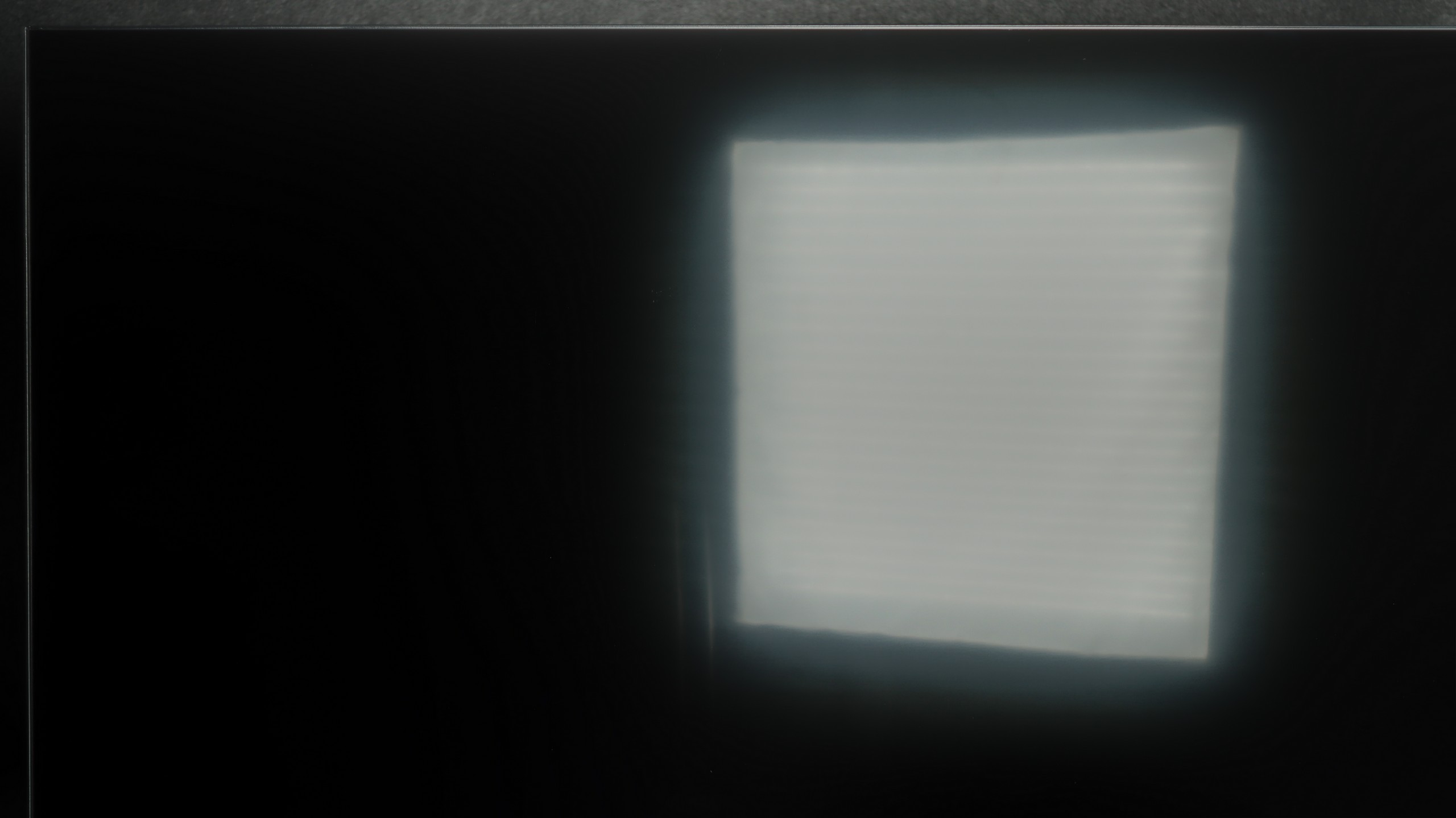

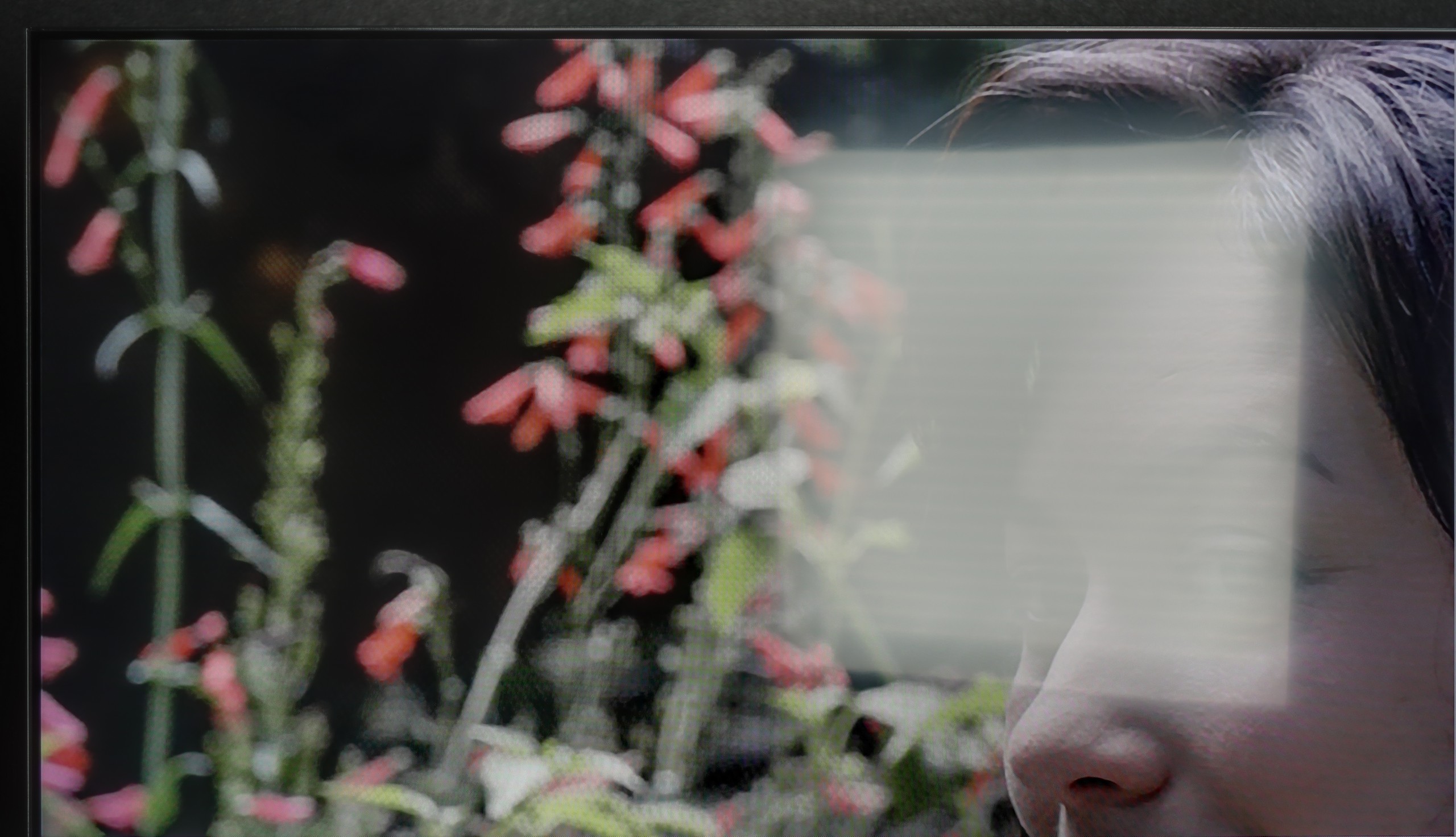
Panel brightness
Average luminance SDR
TCL P7K / P79K: 299 cd/m2
Hisense U6NQ: 488 cd/m2
The Hisense U6NQ performs well in bright rooms thanks to the satin finish on the panel, which effectively suppresses reflections. The average brightness on SDR materials, such as standard television, is 488 cd/m², which is more than sufficient for comfortable viewing even in somewhat challenging lighting conditions.
The last practical test for any television is its daily performance in daylight conditions when it must compete with ambient light. In this competition, the TCL P7K / P79K has a slight advantage thanks to its satin screen coating. Its structure manages to quite effectively dampen direct reflections, dispersing them and protecting the image from excessive color fading or black brightness. However, passive combat with reflections is one side of the coin. The other is the active ability to "break through" bright surroundings, and here one of the key limitations of this model becomes apparent. The previously mentioned peak brightness of around 300 nits is simply too low to provide a fully comfortable and dynamic viewing experience in a brightly lit living room. In such conditions, the image may lack punch, and lower brightness scenes may lose clarity.
Panel details
Subpixel Structure:

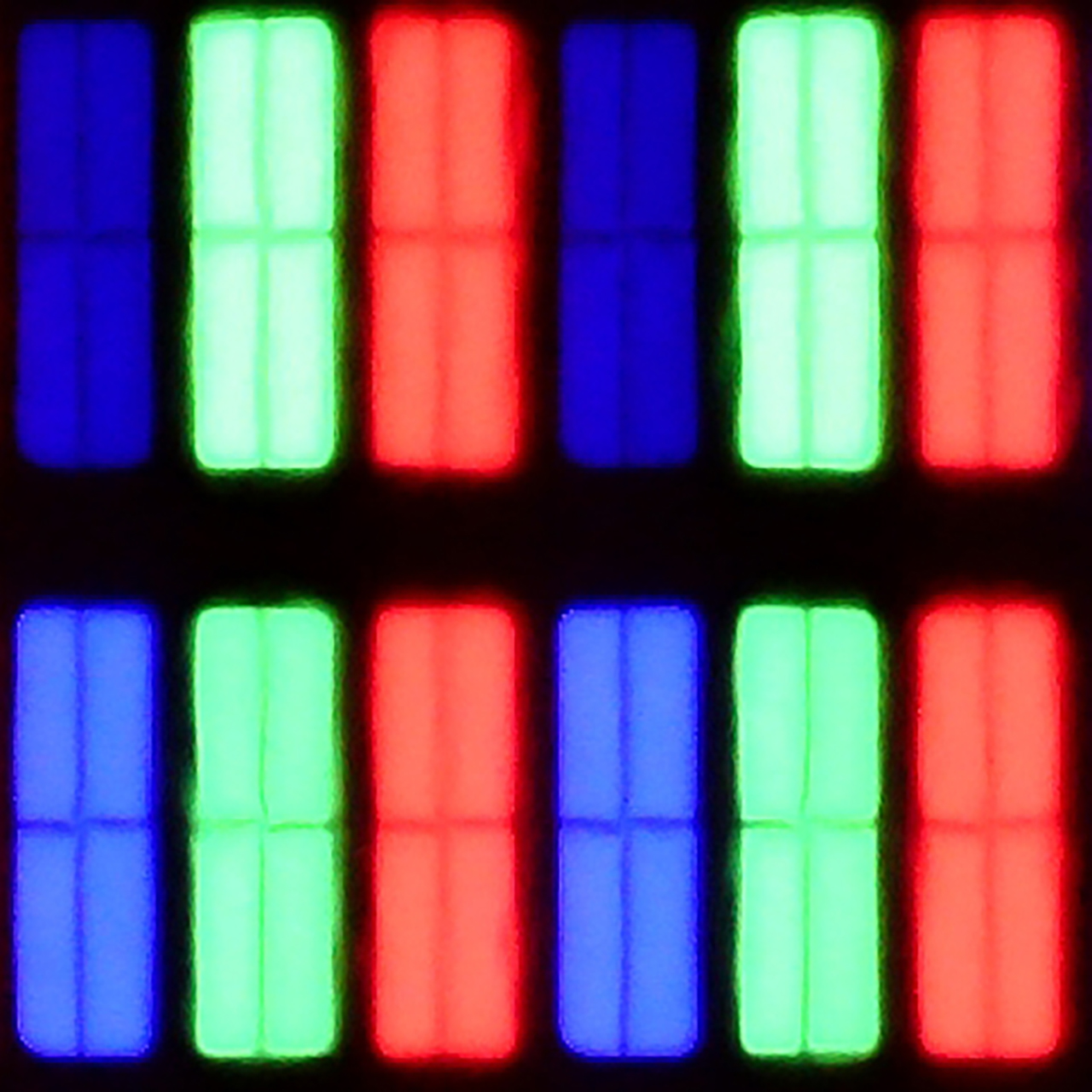
Panel uniformity and thermal imaging:


TV features
8.9/10
7/10
- HDMI inputs3 x HDMI 2.0, 0 x HDMI 2.10 x HDMI 2.0, 3 x HDMI 2.1 48Gbps
- Other inputsRCA (Chinch)Toslink (Optical audio)
- OutputsToslink (Optical audio), eARC (HDMI), ARC (HDMI), Mini-Jack (Headphones)Toslink (Optical audio), eARC (HDMI), ARC (HDMI)
- Network InterfacesWi-Fi 2.4GHz, Wi-Fi 5GHz, Ethernet (LAN) 100MbpsWi-Fi 2.4GHz, Wi-Fi 5GHz, Ethernet (LAN) 100Mbps
- TV receptionDVB-T, DVB-T2, DVB-S, DVB-S2, DVB-CDVB-T, DVB-T2, DVB-S, DVB-S2, DVB-C
Classic features:
- Recording to USB (terrestrial TV)
- Recording programming
- Picture in Picture (PiP)
- RF remote control (no need to aim at the screen)
- Backlit remote control
- Teletext
- Audio only mode
- Bluetooth headphones support
- Simultaneous Bluetooth headphones & TV audio
Smart features:
- AirPlay
- Screen mirroring (Windows Miracast)
- Voice search
- Voice search in native language
- Ability to connect a keyboard and mouse


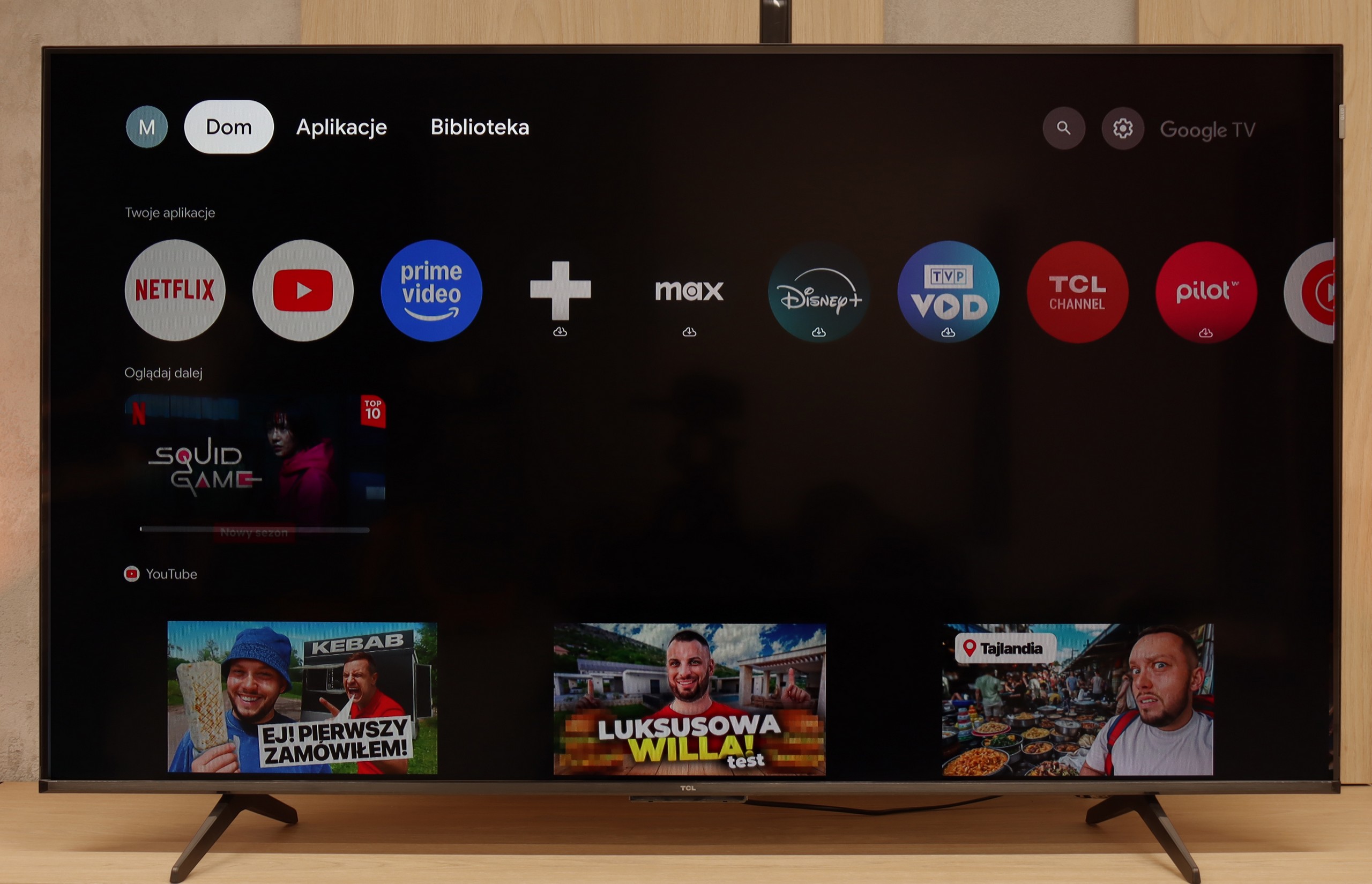
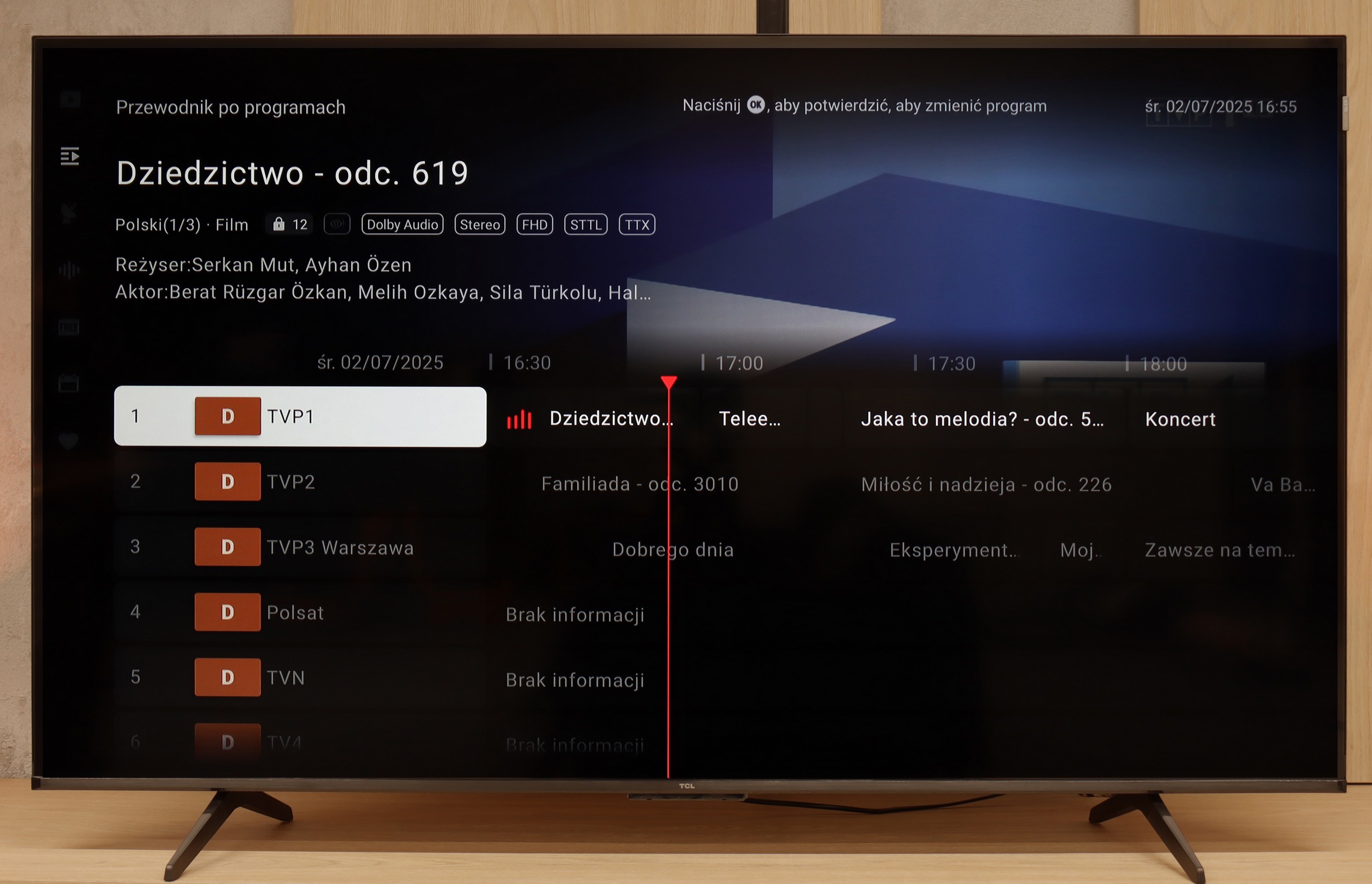
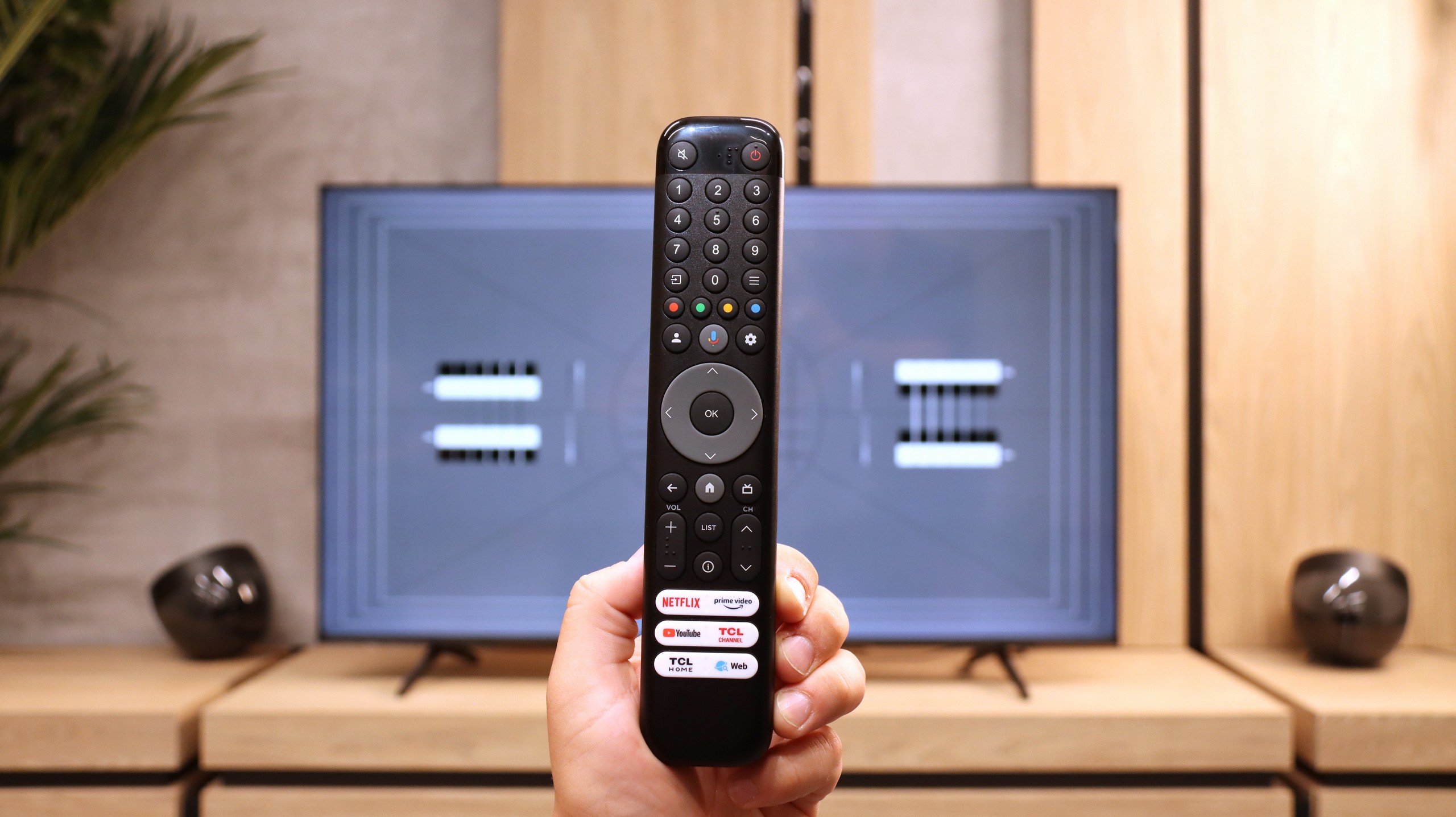
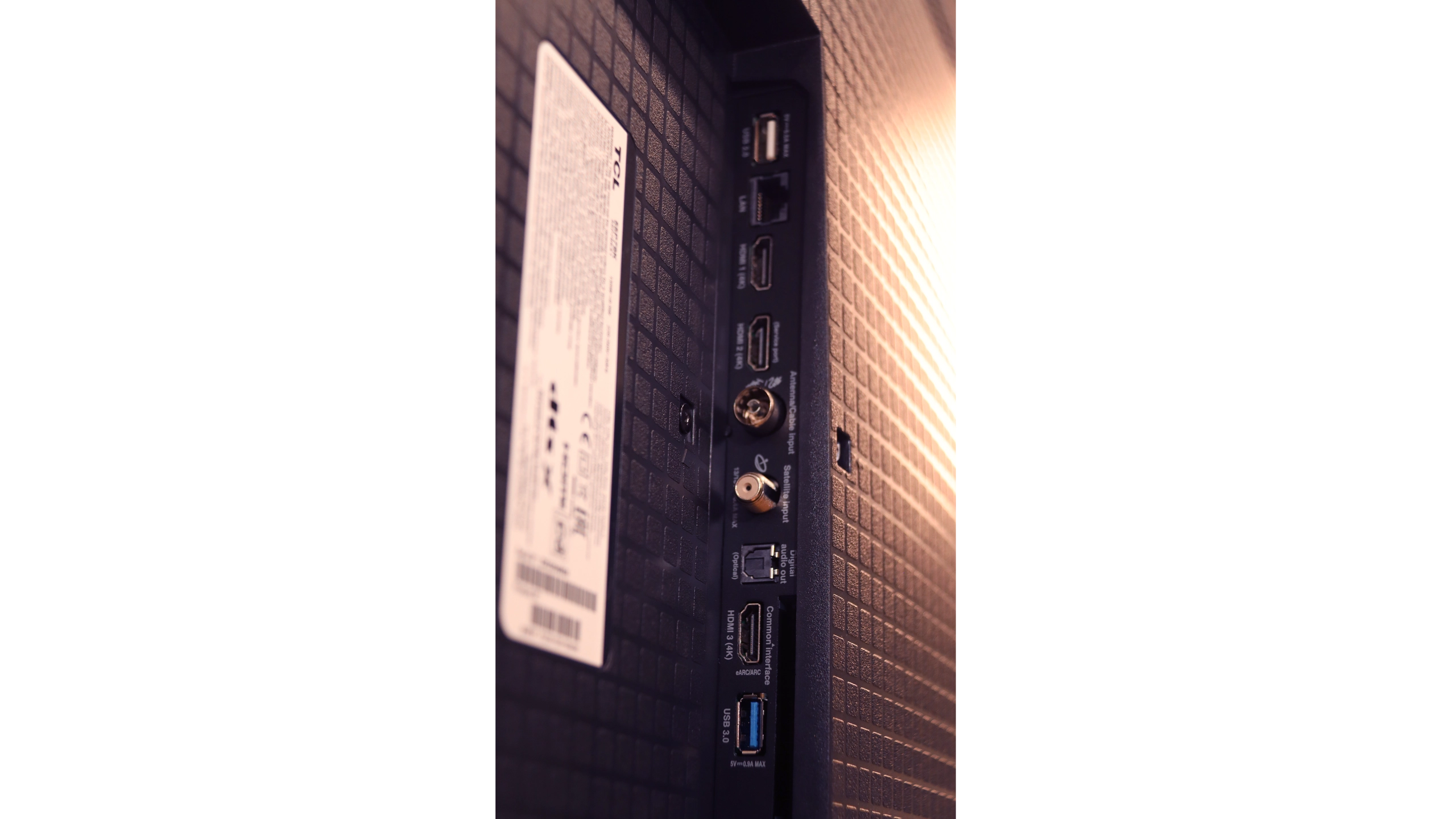
The Vidaa system that powers the Hisense U6NQ is probably one of its stronger points. It is fast, runs smoothly, and most importantly – doesn't suffer from any stuttering that can be frustrating on other televisions. It's nice that you can use voice search, which significantly simplifies operation. There are quite a few apps available, but unfortunately, there are no music apps like Spotify or Tidal. It’s a pity because a TV is not just for movies and shows – some would probably also like to use it for listening to music.
Among the additional features, we have the ability to record TV programs on a USB drive or external hard drive. There is also AirPlay and Miracast, so it's easy to stream content from a smartphone. The built-in Bluetooth is also useful, allowing you to connect headphones, a mouse, or a keyboard. The only thing that is really missing here is the PiP (picture-in-picture) function. If it were added, the TV would be complete for features. Nevertheless, the Hisense U6NQ offers plenty and should be sufficient for most users.
Smart Features – the Power of Google TV
The heart and brain of the TCL P7K / P79K is the Google TV system, which in itself is a huge advantage. This platform provides access to an almost endless library of applications from the Play Store, ensuring that we won't be missing any key streaming service. Integration with other devices is exemplary – Apple device owners will appreciate the seamless cooperation via AirPlay, while Windows and Android users will easily take advantage of the screen mirroring feature. It is also worth highlighting the Google Assistant, which performs fantastically with voice searches in Polish, remaining one of the most effective and convenient solutions of its kind on the market. The operation of the system on the tested model can be described as "average plus." The interface is mostly smooth, but during testing, it experienced occasional slowdowns and even sporadic "freezes" requiring a moment of patience. Minor hiccups are also visible in the translation of some system messages, which can be awkward – however, these are just small oversights on TCL's part, not affecting overall functionality.
Classic Features
In the age of smart systems, traditional television functions often take a back seat, and this is also the case here. A significant advantage is the inclusion of a classic remote control with a numeric keypad, which does not require precise aiming at the screen for communication, greatly enhancing user comfort. The presence of Bluetooth technology for connecting external devices, like headphones or speakers, should also be noted positively. However, this is where the list of conveniences basically ends. It is evident that TCL has placed nearly everything on the Google TV card, treating classic functions as an absolute minimum. Therefore, we will not find the option to record programs from built-in tuners to a USB drive or the once-popular PiP (Picture-in-Picture) feature. This is therefore a basic package that simply works, but does not offer anything beyond what is necessary.
Playing files from USB
8.5/10
7.2/10
Supported photo formats:
Maximum photo resolution:

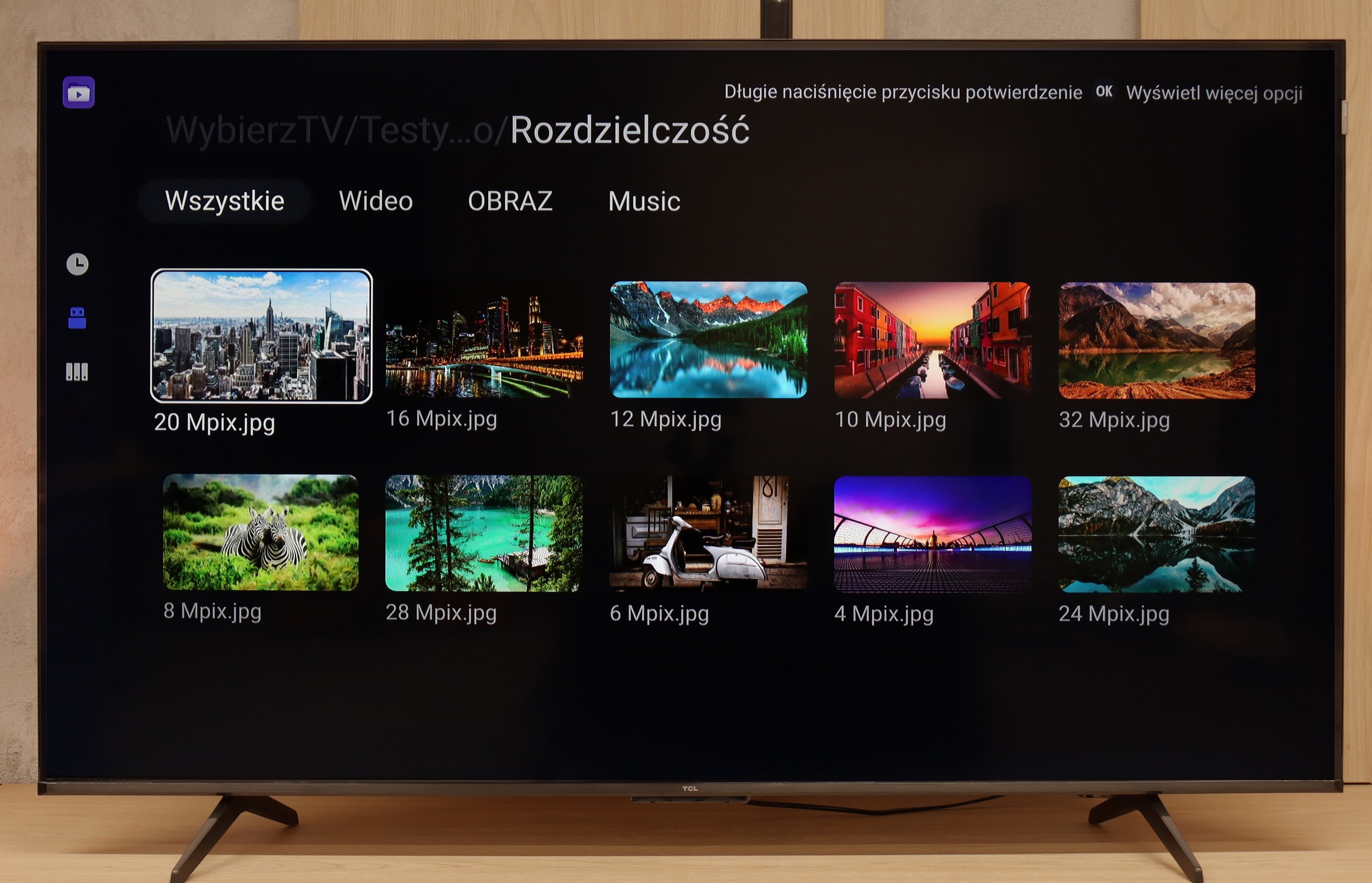
The built-in file player in the Hisense U6NQ should satisfy most users. It supports Polish characters and allows easy editing of displayed subtitles, which is a big plus. Unfortunately, it lacks support for the AV1 codec, which may be an issue for those looking to play newer video formats. However, for less demanding users, the player’s features will be fully adequate.
The built-in media player in the P7k/P79k model is at least a puzzling case, putting us in quite an unusual situation. On one hand, its engine handles decoding most popular video formats, which is obviously good news. On the other hand, we encountered a surprising and irritating issue – the default application has a fundamental problem displaying Polish diacritical characters in subtitle files correctly. Instead of letters like "ą", "ę", or "ż", empty squares or random, unreadable symbols appeared on the screen. Fortunately, thanks to the flexibility of the Google TV system, this problem can be easily circumvented. Installing an alternative, advanced player, such as the reliable VLC or KODI, completely resolves this inconvenience. The situation is peculiar because this flaw did not occur in other TCL models we tested previously. We are therefore dealing with a clear software oversight, which, hopefully, will be fixed in a future update.
Apps
7.7/10
9.6/10














































Sound
6.3/10
6.2/10
- Maximum volume--
- Dolby Digital Plus 7.1
- Dolby True HD 7.1
- Dolby Atmos in Dolby Digital Plus (JOC)
- Dolby Atmos in Dolby True HD
- DTS:X in DTS-HD MA
- DTS-HD Master Audio
The Hisense U6NQ is equipped with a standard set of speakers with a power of 20 W, which is a typical solution in this class of TVs. The sound is decent but nothing particularly special. However, it is worth noting the support for all popular audio codecs, including DTS and Dolby Atmos. This allows for easy connection to a home theatre system or soundbar, resulting in significantly better audio experiences than the built-in speakers.
In terms of the built-in audio system, the TCL P7k/P79k presents a level that can be described as functional and correct, but lacking audiophile ambitions. The speakers play quite loudly, and dialogues in movies and TV shows are conveyed clearly and without distortion, which is crucial in everyday use. However, the soundstage definitely lacks a foundation in the form of low tones. This is a direct consequence of the absence of a dedicated subwoofer – an element that in the higher P8K series, with a large Onkyo subwoofer at the back of the cabinet, defined the strength of its sound. Here, that element is simply missing, making the sound seem flatter and lacking the depth that creates a cinematic atmosphere. We also noticed a peculiar feature in the software – when trying to set the maximum volume, the TV automatically reduces it. It's hard to conclusively determine whether this is a form of protection against distortion or a minor software bug; nonetheless, it's a pity, as the power reserves seem to be somewhat greater.
